Best rowing machines 2025: Full-body workout in the comfort of your home
We have tested the best rowing machines to help you boost your heart health: From foldable rowers to premium options, these are our top picks to invest in this holiday season.
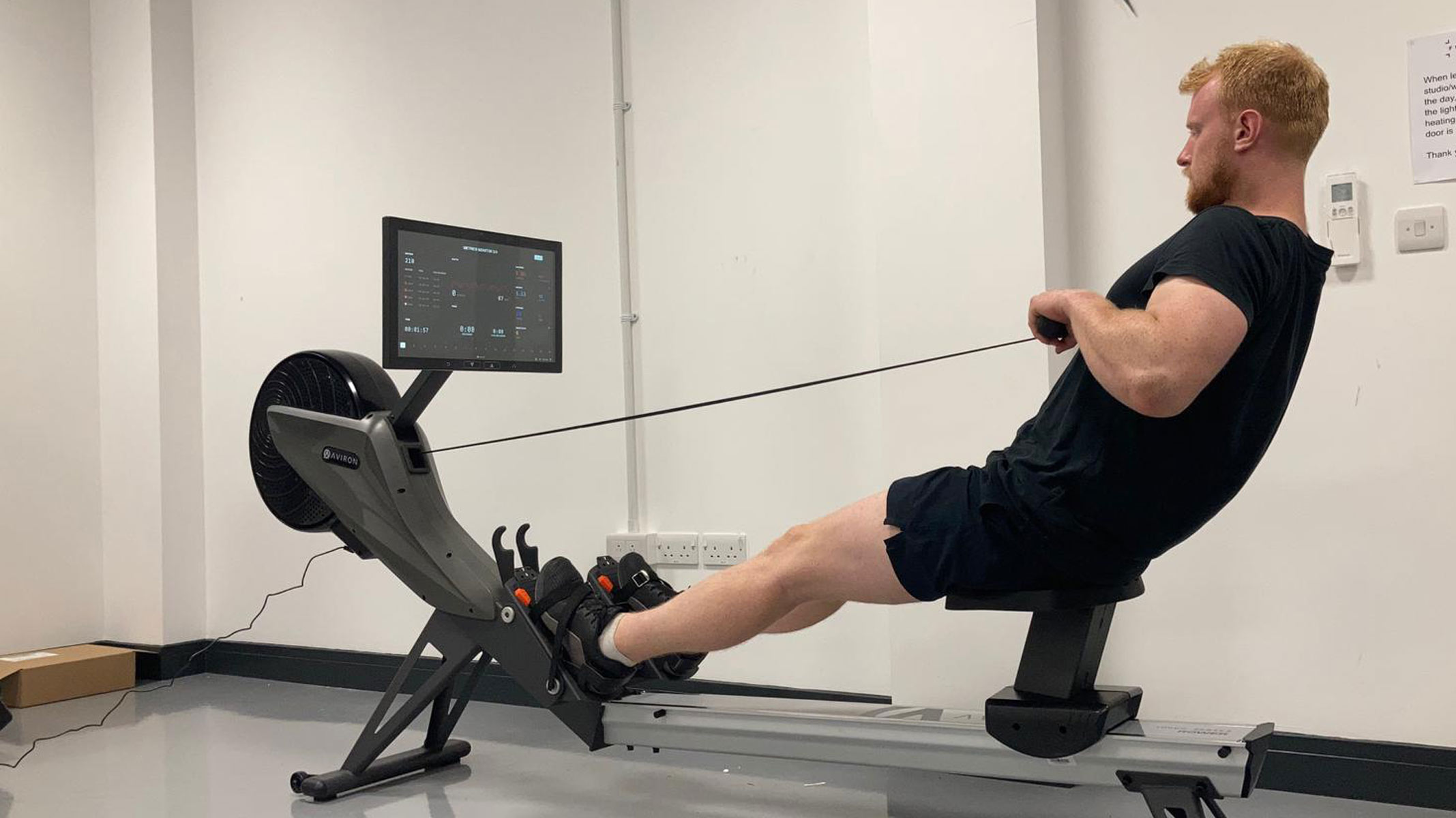
Investing in one of the best rowing machines is a great way to improve your cardiovascular health, increase your endurance and burn A LOT of calories. That is because rowers engage all major muscle groups in your body, including your core and shoulders, Sarah Fuhrmann, the owner of ucanrow2 and a certified rowing instructor, told Live Science.
While it is always a good time to row, early fall can be a particularly good time to take up this activity. With chilly weather outside, working out in the comfort of your home can be an attractive alternative to outdoor activities. Not to mention, many brands offer heavily discounted rowers in the holiday sales — a perfect opportunity to try out this sport if you have never done it before.
But exactly which rowing machine should you buy? There are plenty of options out there, from basic foldable machines like the Echelon Smart to premium rowers brimming with high-tech features — the excellent Aviron Strong Series, for example. Each model comes with pros and cons, with price being just one factor out of many. Ultimately, choosing the right rower will largely depend on your needs, fitness abilities and preferences. Unsure where to start? Scroll down to the Rowing machines FAQs for heaps of useful info on rowing, or to the How to choose section for detailed buying advice.
Our expert fitness reviewers tried and tested some of the best rowing machines on the market to help you guide your decision. We put each model in this guide through a series of fitness and durability tests to give you the best possible assessment of their performance and how they compare to others. You can read more about our testing protocol in the How we test section down below. These are the best rowing machines to invest in this year, according to our fitness experts.
Alternatively, if running is more your style, we have also picked out the best treadmills.
The best rowing machines we recommend in 2025: Fully tested by our fitness experts
Why you can trust Live Science
The best rowing machine overall
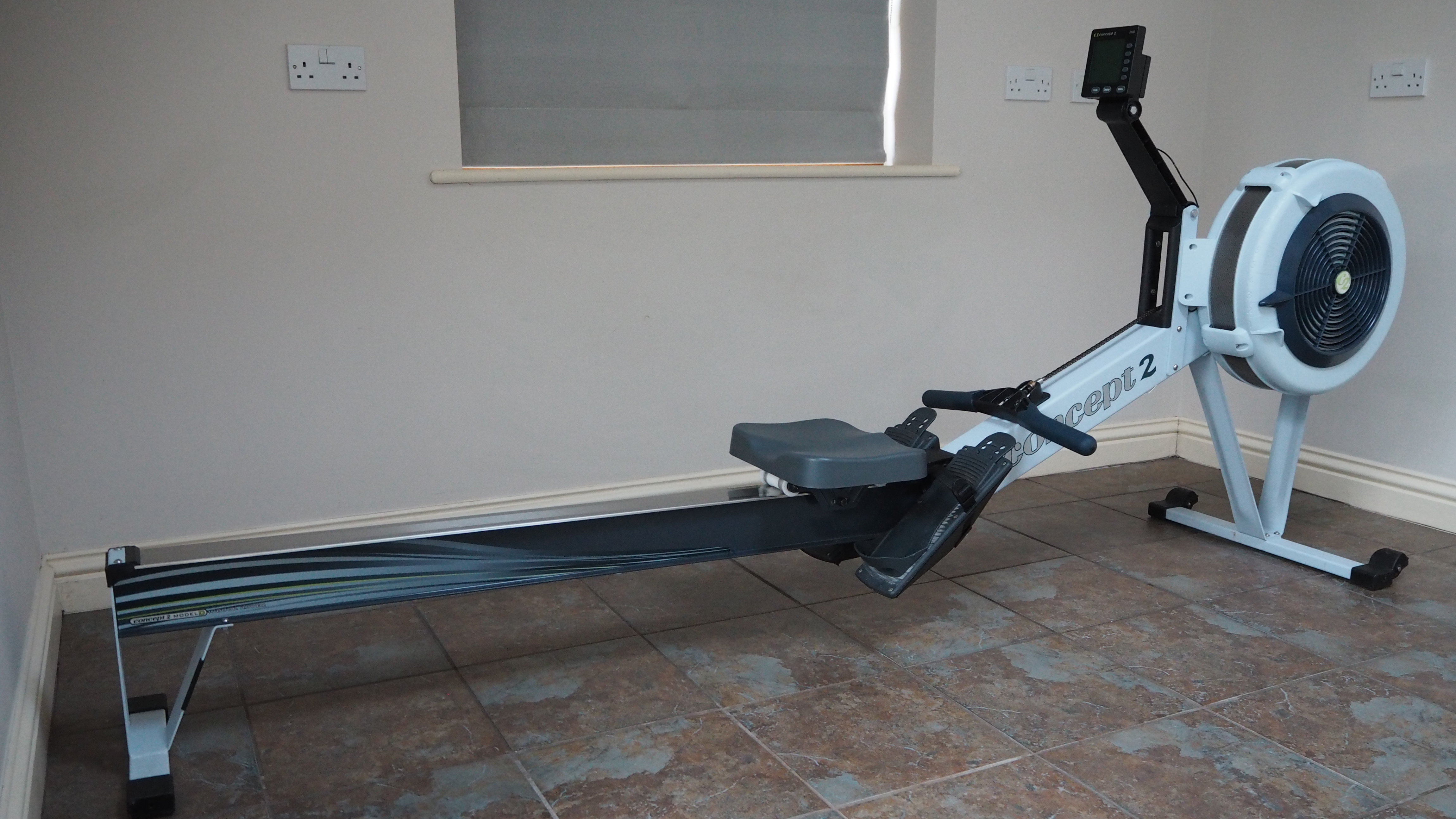
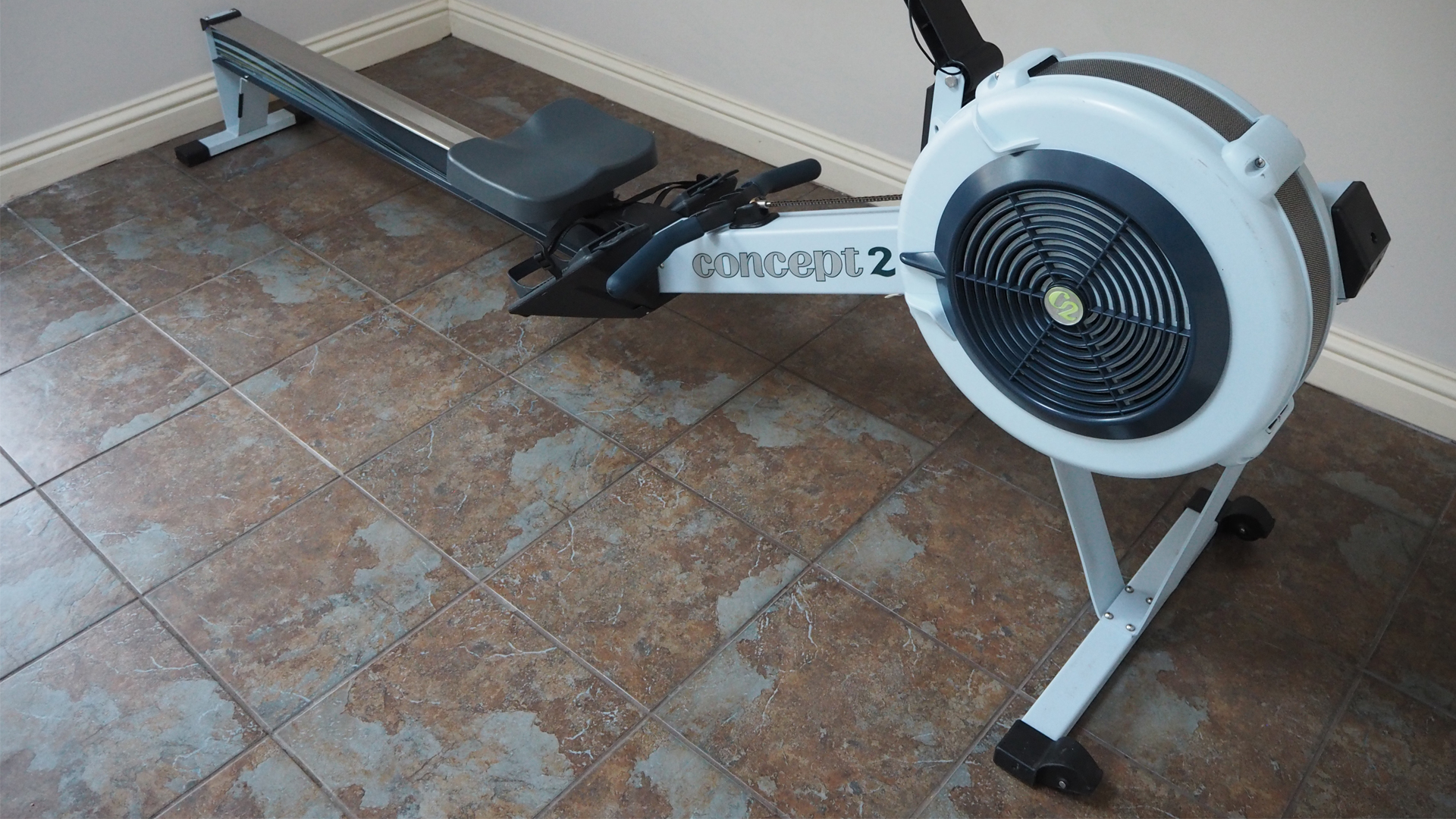
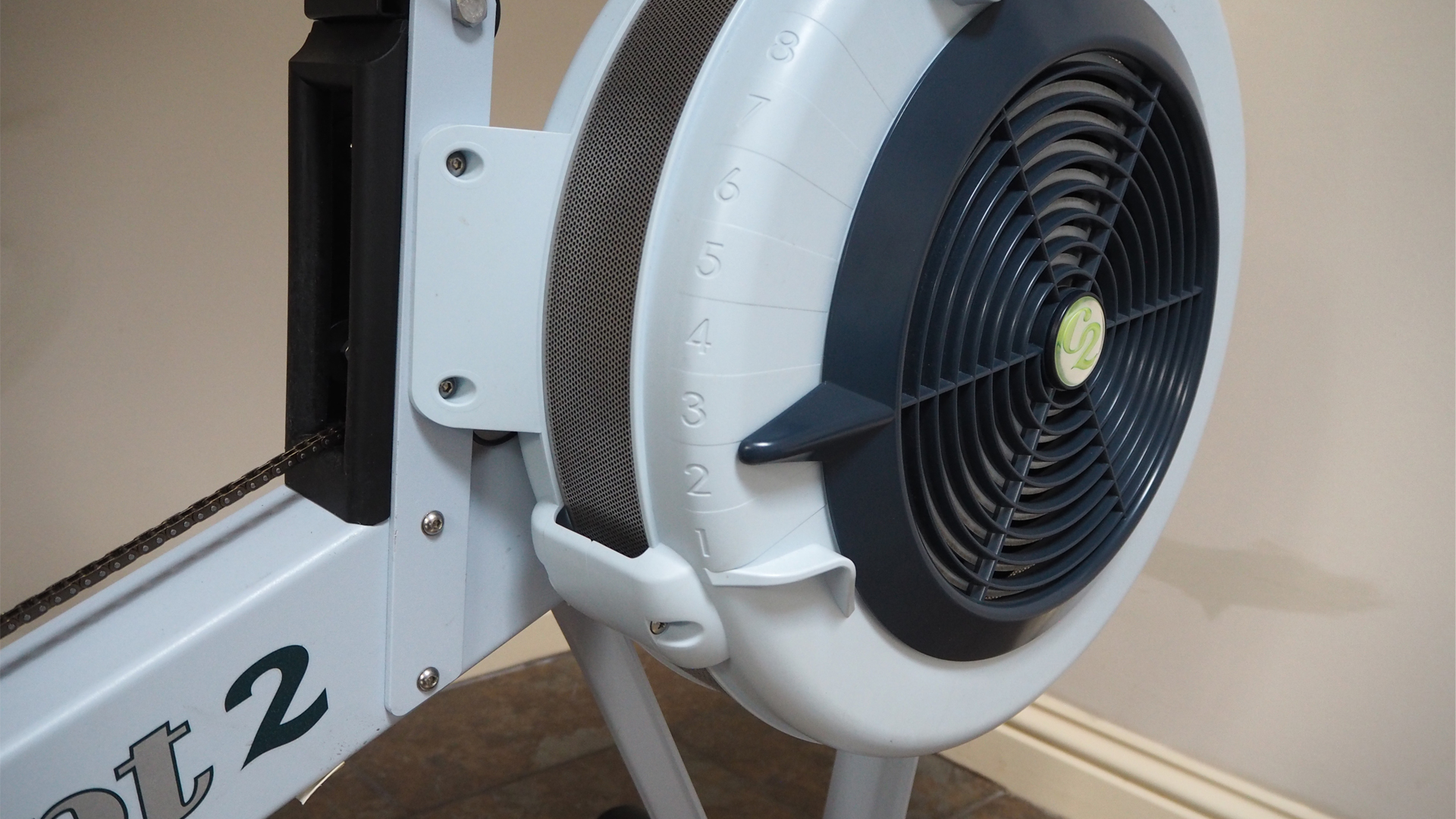
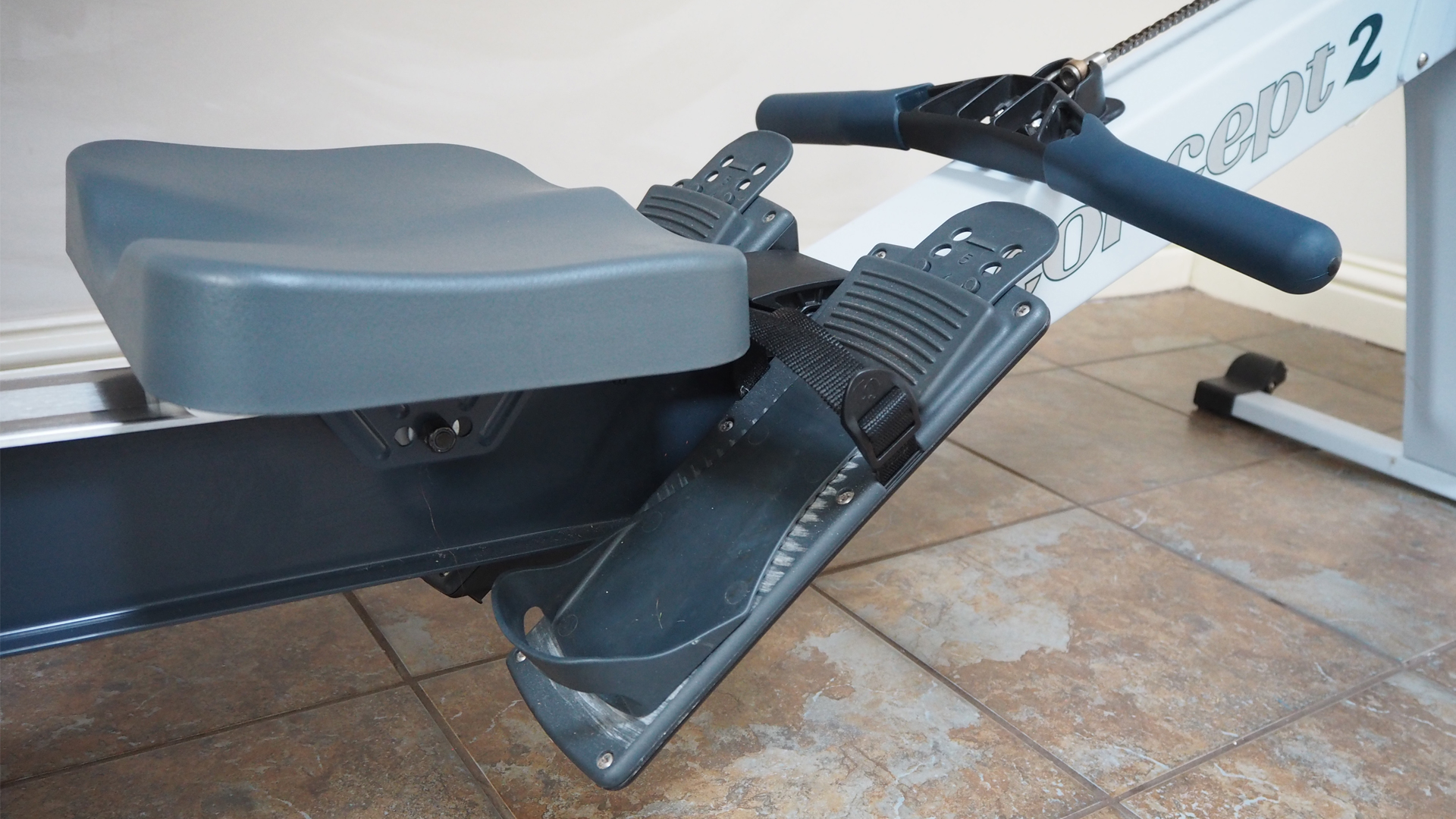
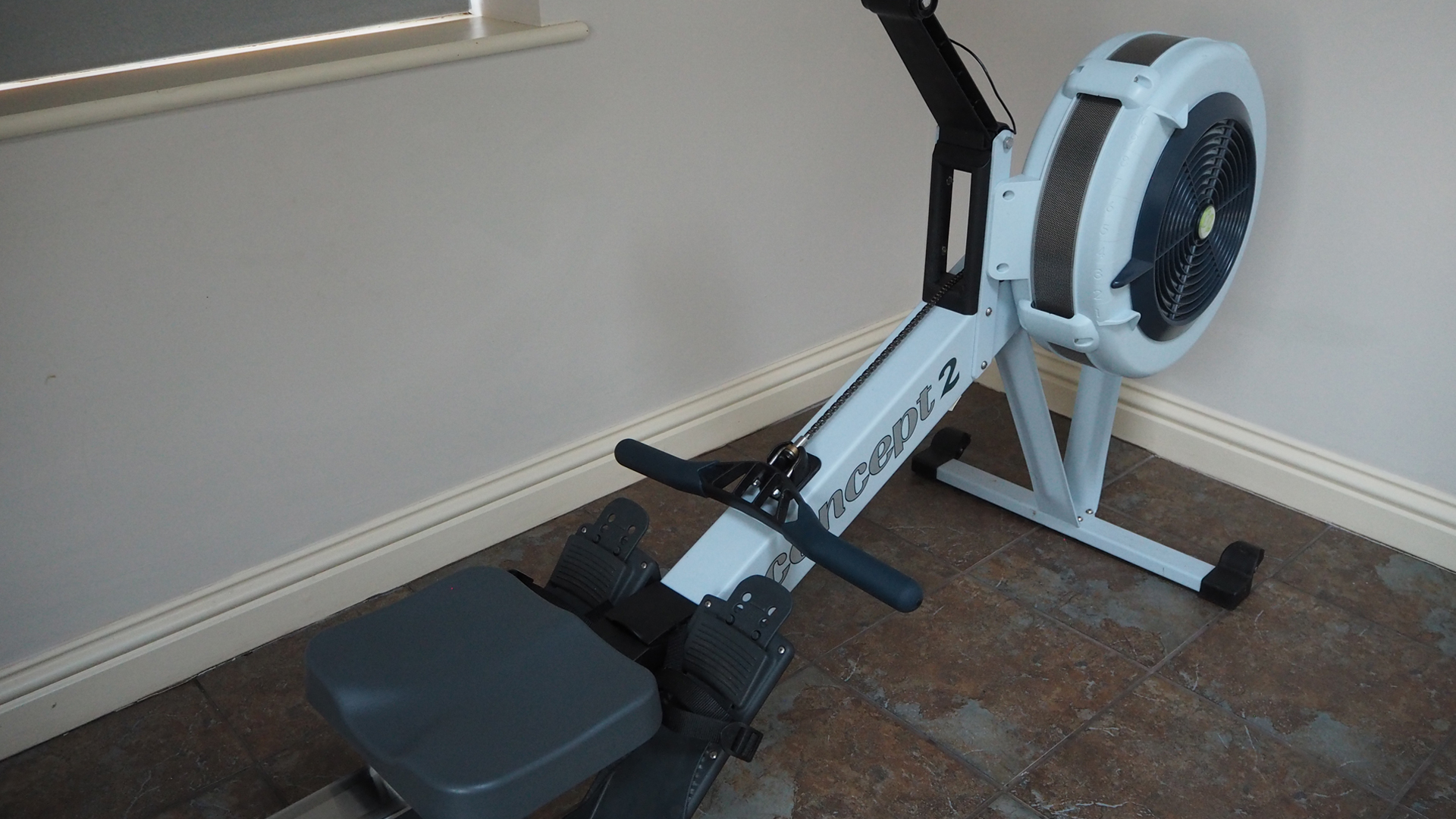
Specifications
Reasons to buy
Reasons to avoid
✅ You want value for money: It is an industry standard, but it costs less than most other models in this guide.
✅ You need something long-lasting: This rower is sturdy and durable, and you can easily get hold of the replacement parts.
✅ You train for performance: This rower delivers a realistic rowing experience and displays all key stats.
❌ You want a sleek design: It is not as good-looking as the Hydrow Wave or Ergatta Rower, for example.
❌ You enjoy fitness classes on demand: No colorful touchscreen or workout apps.
🔎 Concept2 Model D: This well-made rowing machine offers unbeatable performance and excellent workout tracking — but comes with no frills typical of more premium rowers. ★★★★½
The Concept2 RowErg needs no introduction — this iconic rowing machine takes the top spot thanks to its world-class performance, sturdy design, and data-tracking prowess.
This top-end model is beloved by rowers, too, and it is regularly used in prestigious indoor rowing competitions and installed in gyms across the country. When we tested it out during our Concept2 RowErg review, we found it delivered a smooth, comfortable workout and we were happily surprised at how quiet it was, too.
The flywheel is common to all air-resistance machines and produces a white noise that is certainly louder than a magnetic rowing machine, and less appealing than the swoosh of the water rower, but the Concept2 RowErg's noise levels aren't excessive. We found it produced around 70-100 dB while in use, which is similar to a regular washing machine.
Keeping track of how much you have rowed (and being rewarded when you reach landmarks) is simple with the Concept2 logbook. All that data is synced, which means you can also enter competitions and pit yourself against other users over set distances.
The rowing machine's monitor is compatible with the free ErgData app, which allows you to monitor all your performance statistics; it stores and displays your workout results; and it uploads everything to the Concept2 online logbook. The app also works with Android and iOS devices. The monitor also connects to a suite of other apps so you can take advantage of online classes, coaching and training programs. You can even sync up to virtual racing. This data-tracking proficiency makes it a particularly good option for athletes and performance rowers.
On the other hand, beginners and people who tend to struggle with their exercise routine may not find the Concept2 RowErg too appealing. It has no interactive display, and unlike the Aviron Strong Series or Egatta Rower, for example, it does not offer any rowing tutorials or fun fitness activities. The Concept2 RowErg is not particularly good-looking, either. If you want something more stylish, you may prefer the Hydrow Wave.
However, the advantage of the machine's simple design and tech is that there is very little to go wrong, and people tend to keep their Concept2 RowErg for many years, replacing parts as they wear out and taking advantage of the extremely helpful customer support. Plus, it costs around $1,300, making it cheaper than most models in this guide.
- Read our full Concept2 RowErg review
Attributes | Notes |
|---|---|
Design | Flywheel with 10 airflow resistance settings |
Max user weight | 500 lbs (227 kg) |
Additional costs | None - the ErgData app is free |
Best Concept2 RowErg alternative
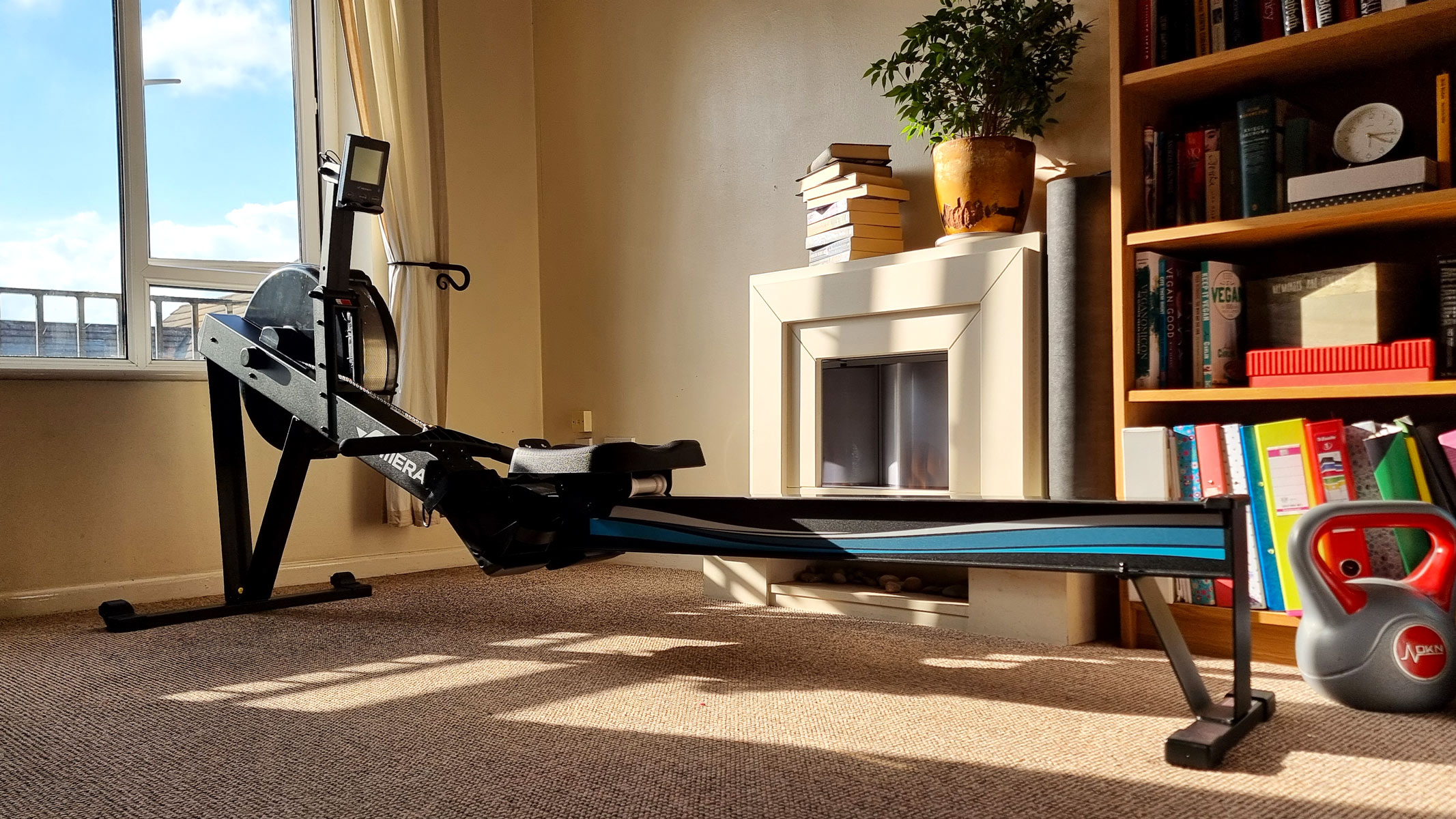
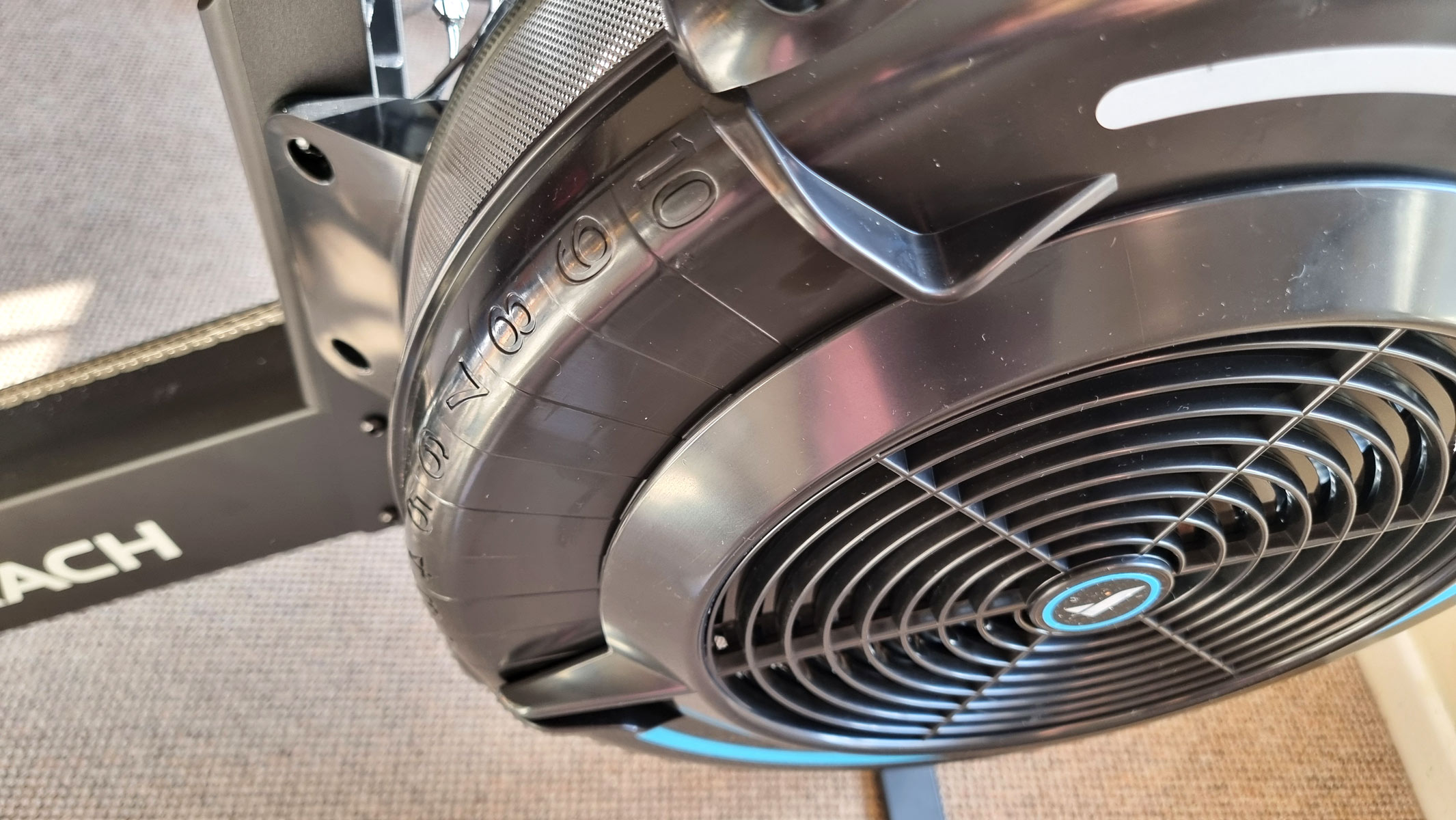

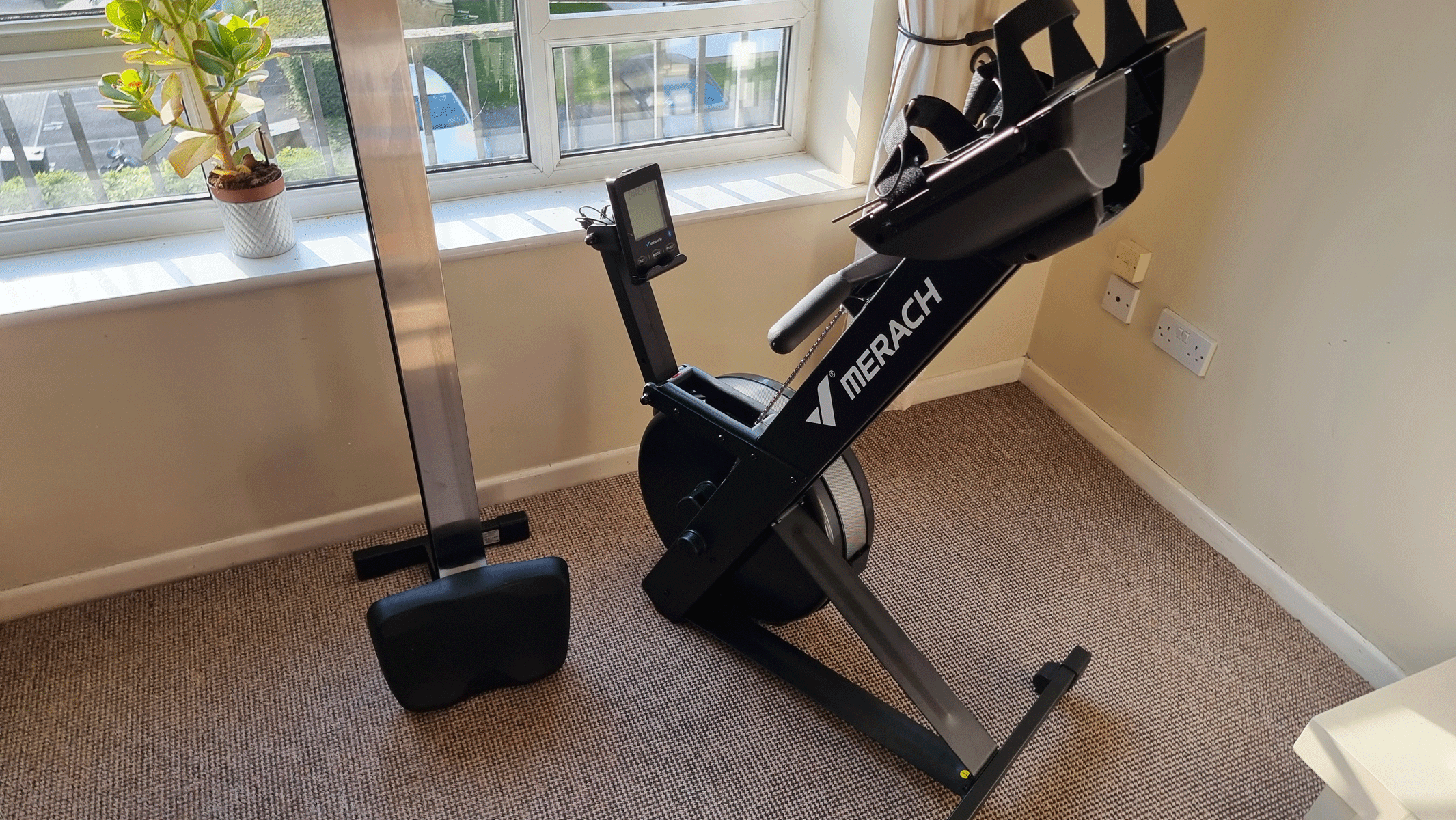
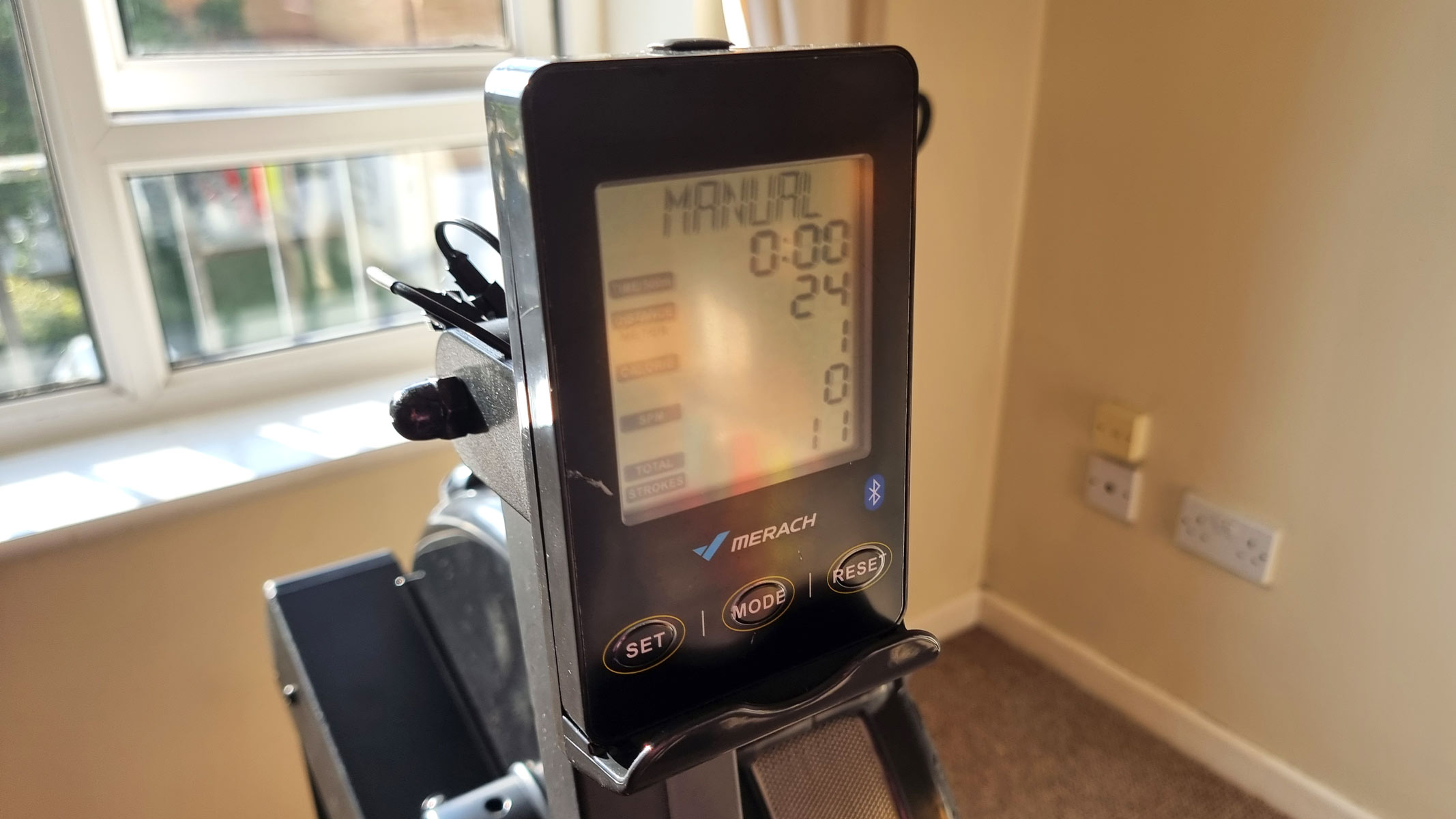
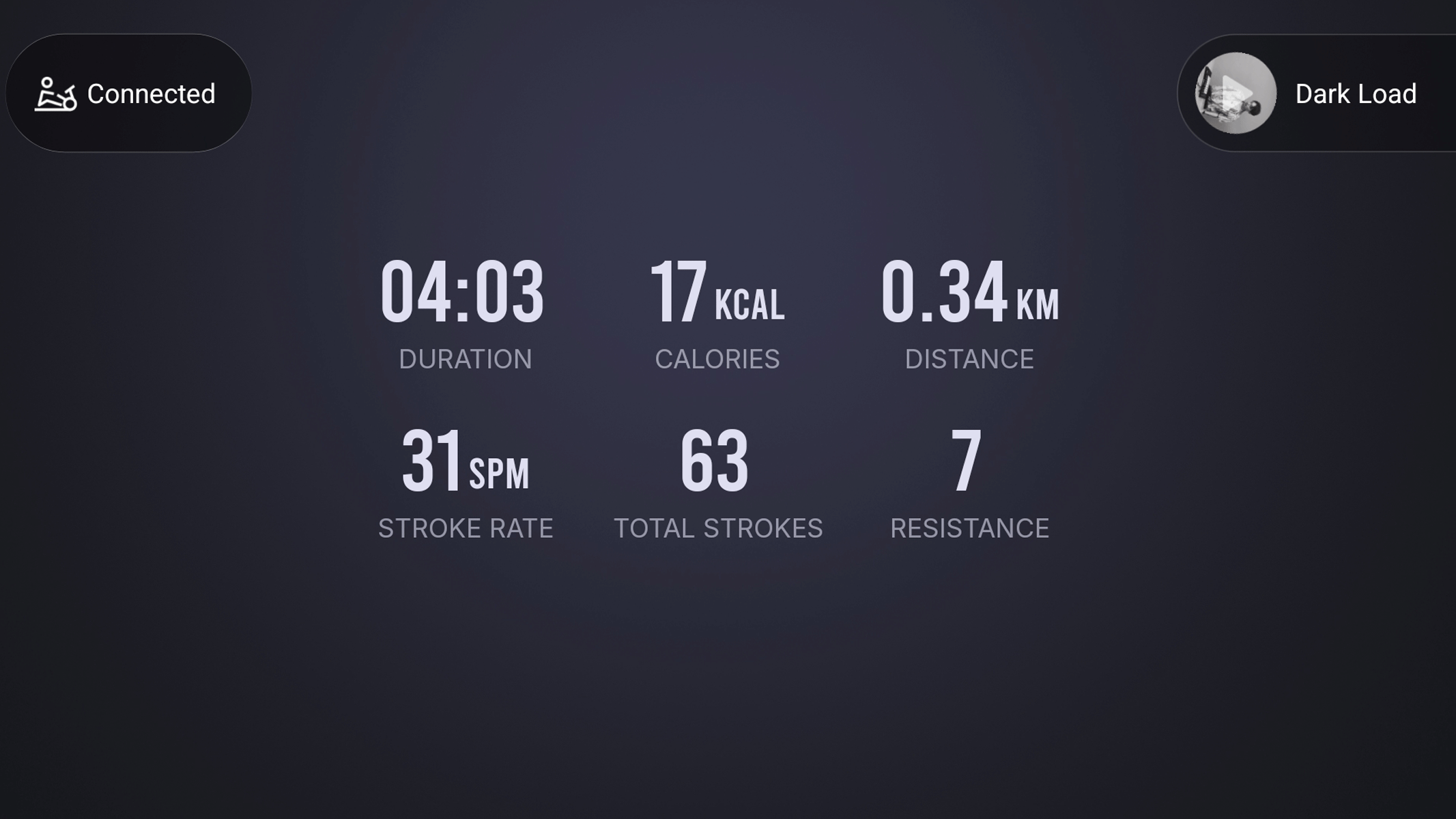
Specifications
Reasons to buy
Reasons to avoid
✅ You are on a budget: It is one of the most affordable models in this guide.
✅ You need something durable: This rower is sturdy and well-made.
✅ You train for performance: It delivers a realistic rowing experience and displays all key stats.
❌ You live alone: Assembling the slide rail can be laborious and typically requires two people.
❌ You enjoy fitness classes on demand: No colorful touchscreen or advanced workout apps.
🔎 Merach NovaRow R50: Sturdy, relatively quiet and reasonably priced, it is an excellent alternative to the Concept2 RowErg. However, it is also surprisingly heavy, and it lacks the frills typical of modern cardio machines. ★★★★
The Concept2 RowErg is a fabulous piece of kit, but it will not suit everyone's budget. If you are looking for something more affordable, consider the Merach NovaRow R50 instead. Both of these rowing machines are eerily similar in design, performance and functionality, but the latter costs $639.99, approximately $350 less than the Concept2 RowErg. Plus, we regularly see it on sale across major online retailers.
During our Merach NovaRow R50 review, we were particularly impressed by its surprisingly quiet flywheel. Rowing machines with air resistance tend to be quite noisy — for example, the Concept2 RowErg can produce as much as 100 dB, which is as loud as a lawnmower or juice blender. The Merach NovaRow R50, on the other hand, does not tend to go above 77 dB. If that is still not quiet enough, though, you may want to consider one of the magnetic rowers.
We also liked how comfortable it was to ride. This rowing machine features a relatively wide seat made mostly of well-cushioned foam leather rather than tough plastic. Moreover, it produces smooth, balanced strokes, and its cable does not tend to jar in the flywheel or rub against the solid parts. Lastly, its rail is long enough to accommodate taller individuals. All in all, the Merach NovaRow R50 offers a great rowing experience — and that is not something that we see often in cardio machines at the affordable end of the spectrum.
That said, this rower will not suit everyone. To start with, it is quite tricky to put together. The Merach NovaRow R50 comes with a detachable slide rail, making it relatively easy to store. However, sliding it in requires a surprising amount of strength and dexterity. We were also disappointed by its simple two-tone display.
- Read our full Merach NovaRow R50 rowing machine review
Attributes | Notes |
|---|---|
Design | Flywheel with 10 airflow resistance settings |
Max user weight | 350 lbs (158 kg) |
Additional costs | None - the Merach app is free |
Best water-based rowing machine
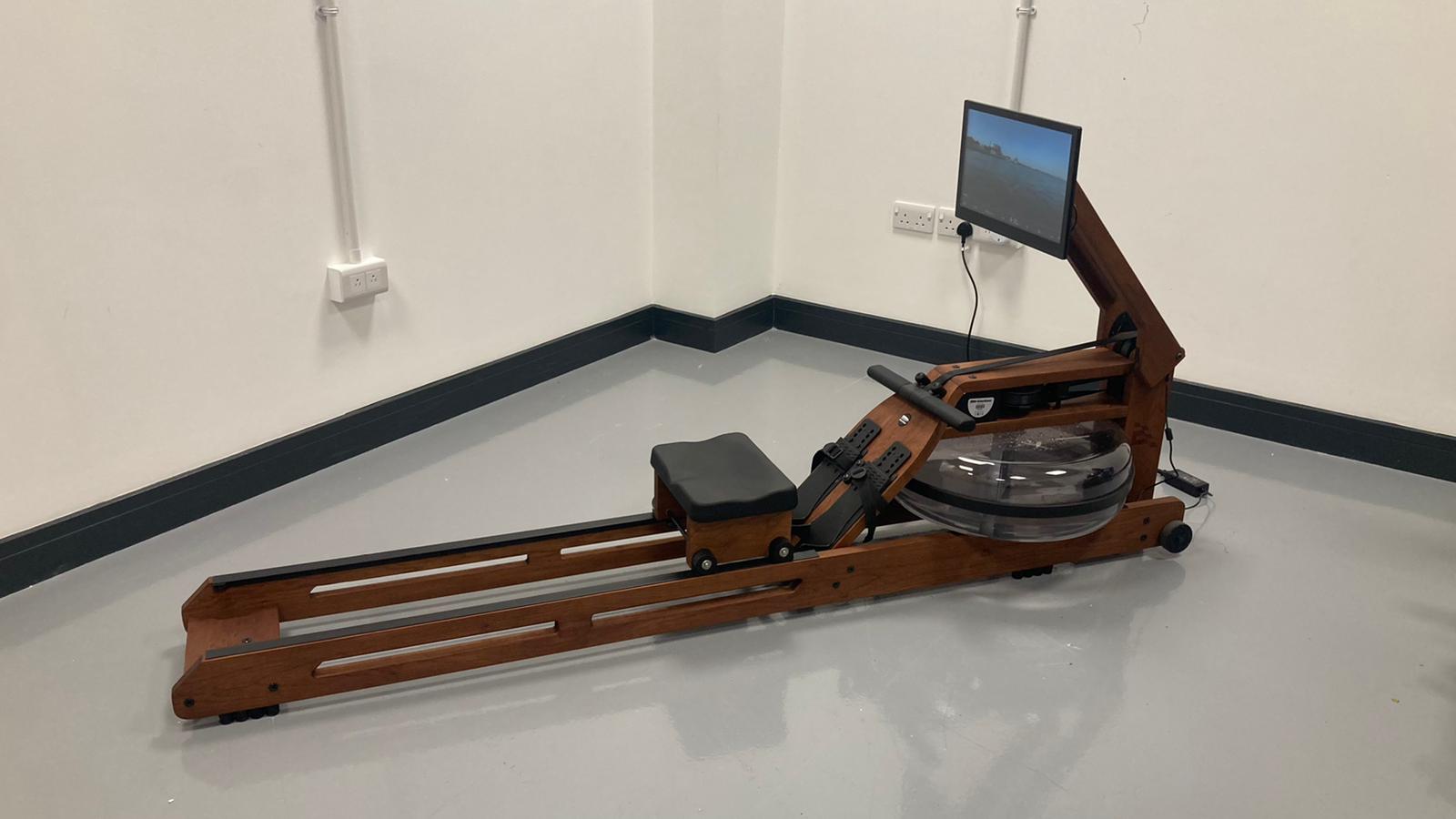
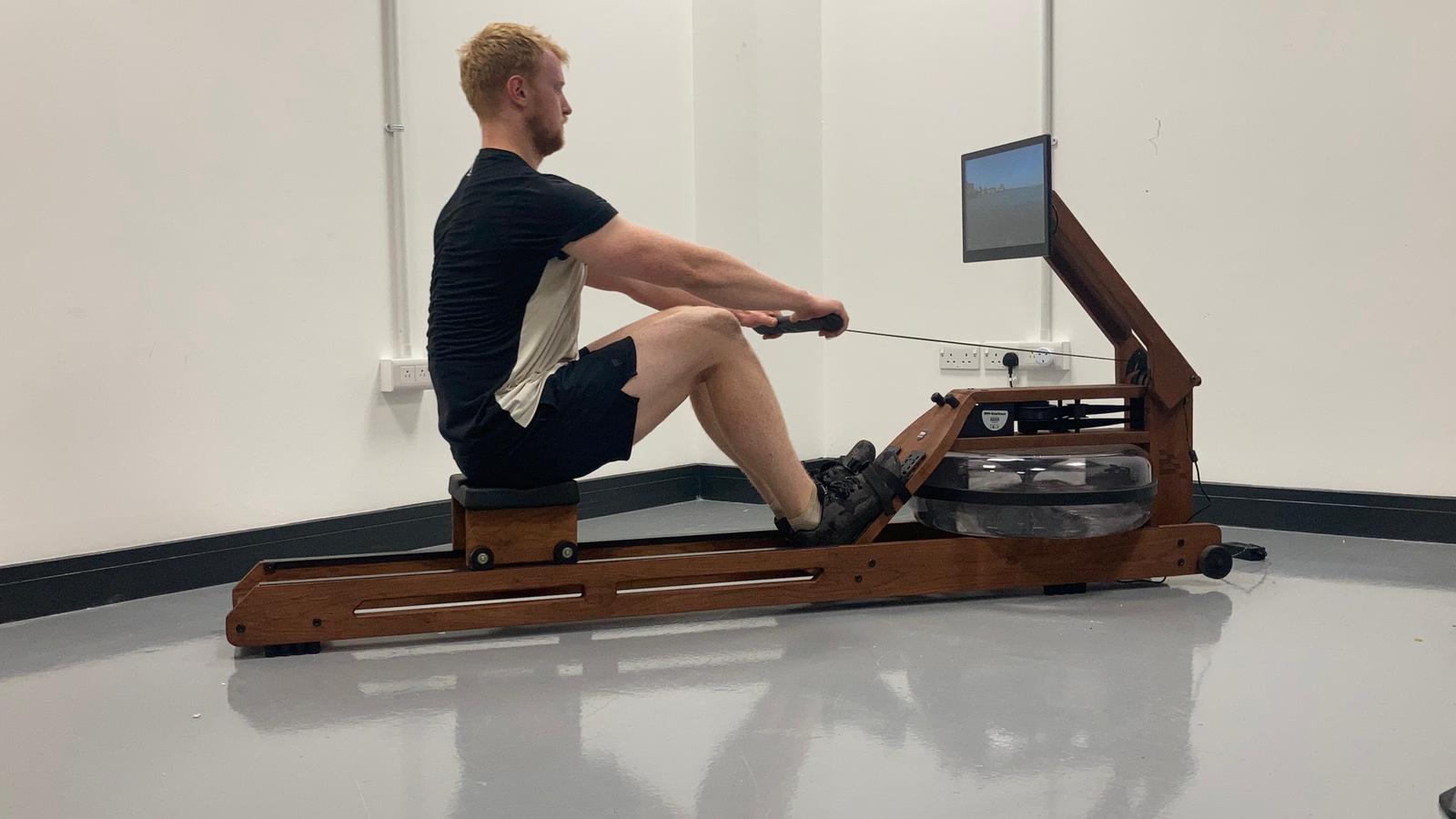
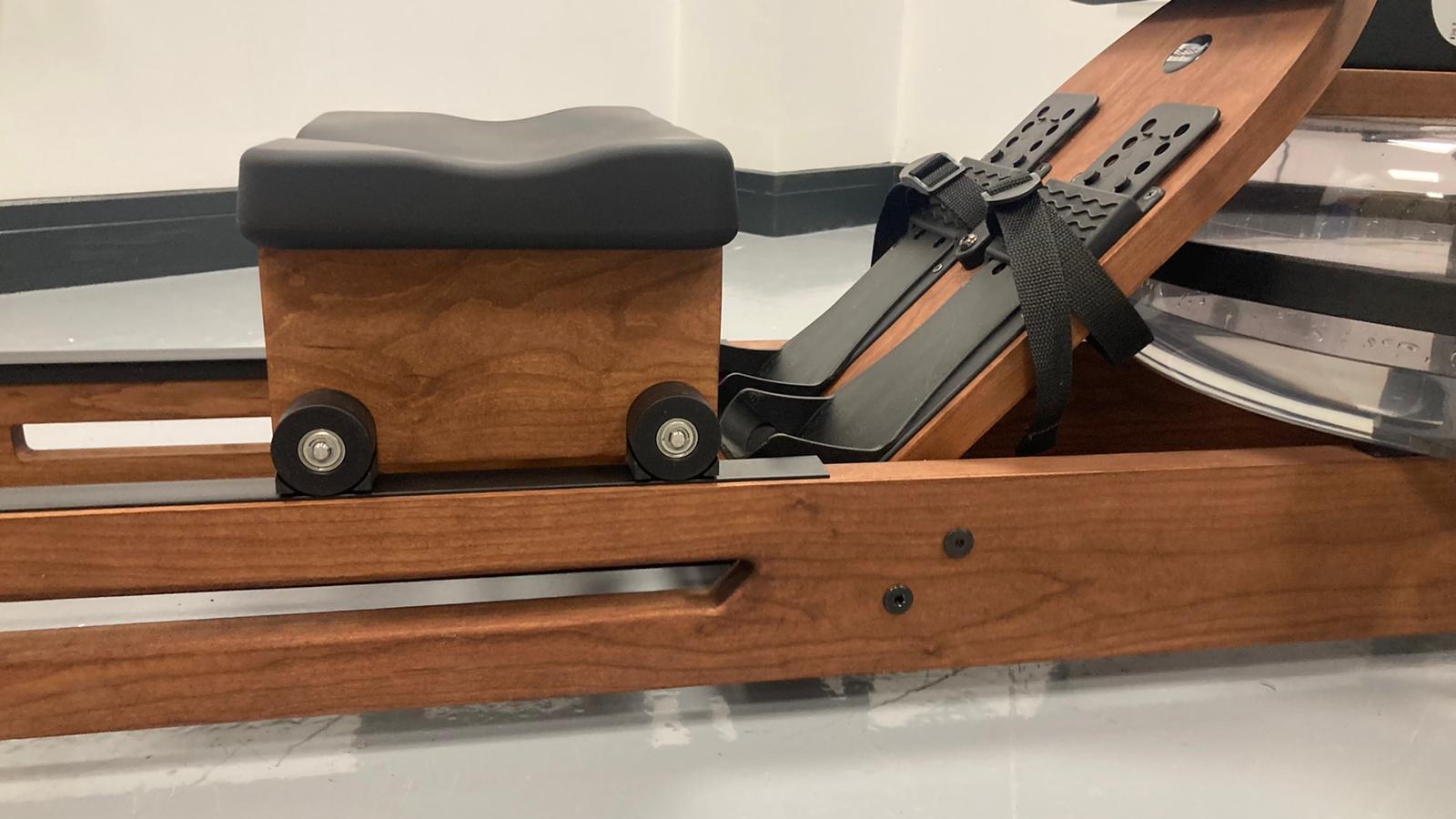
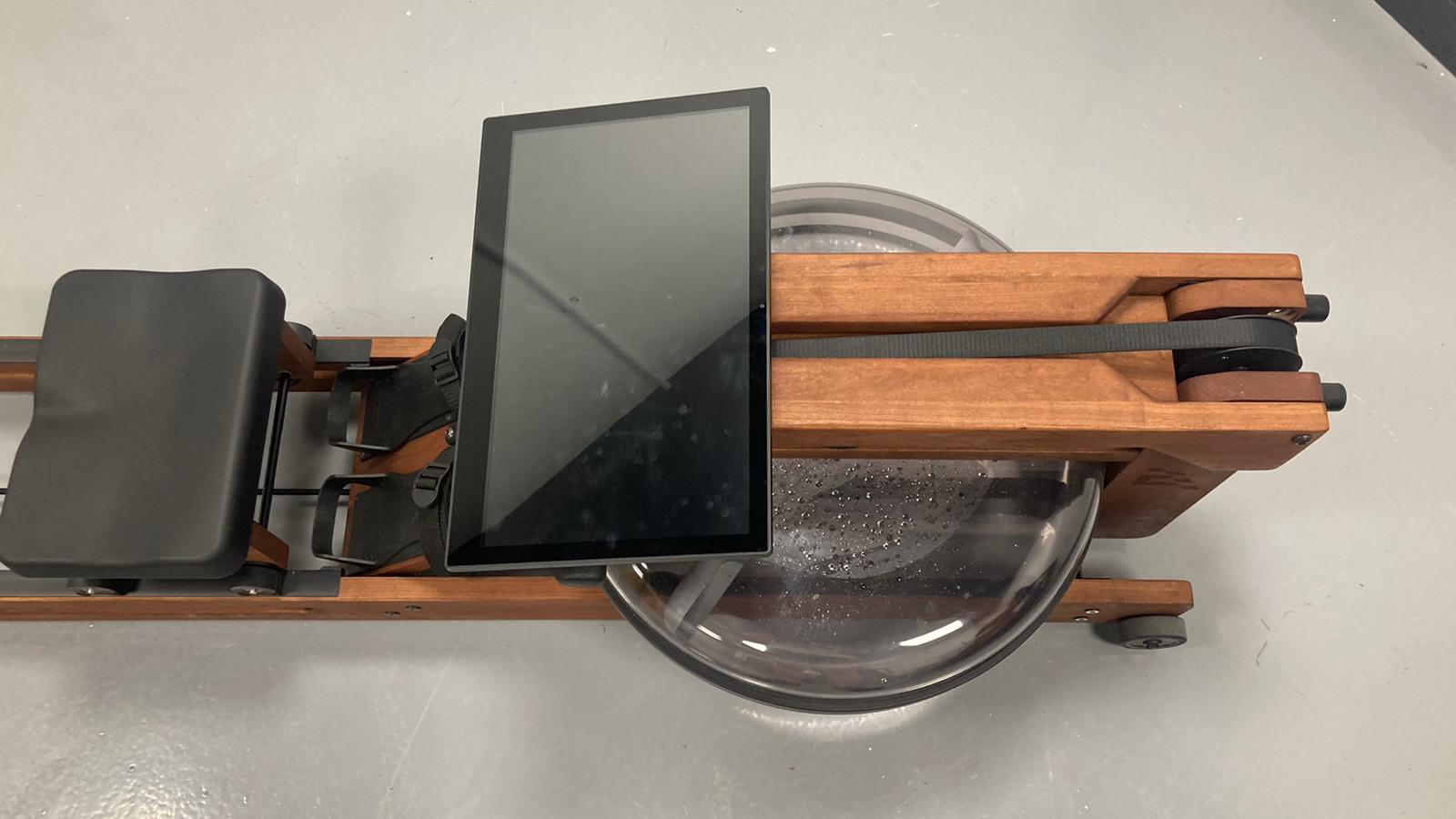
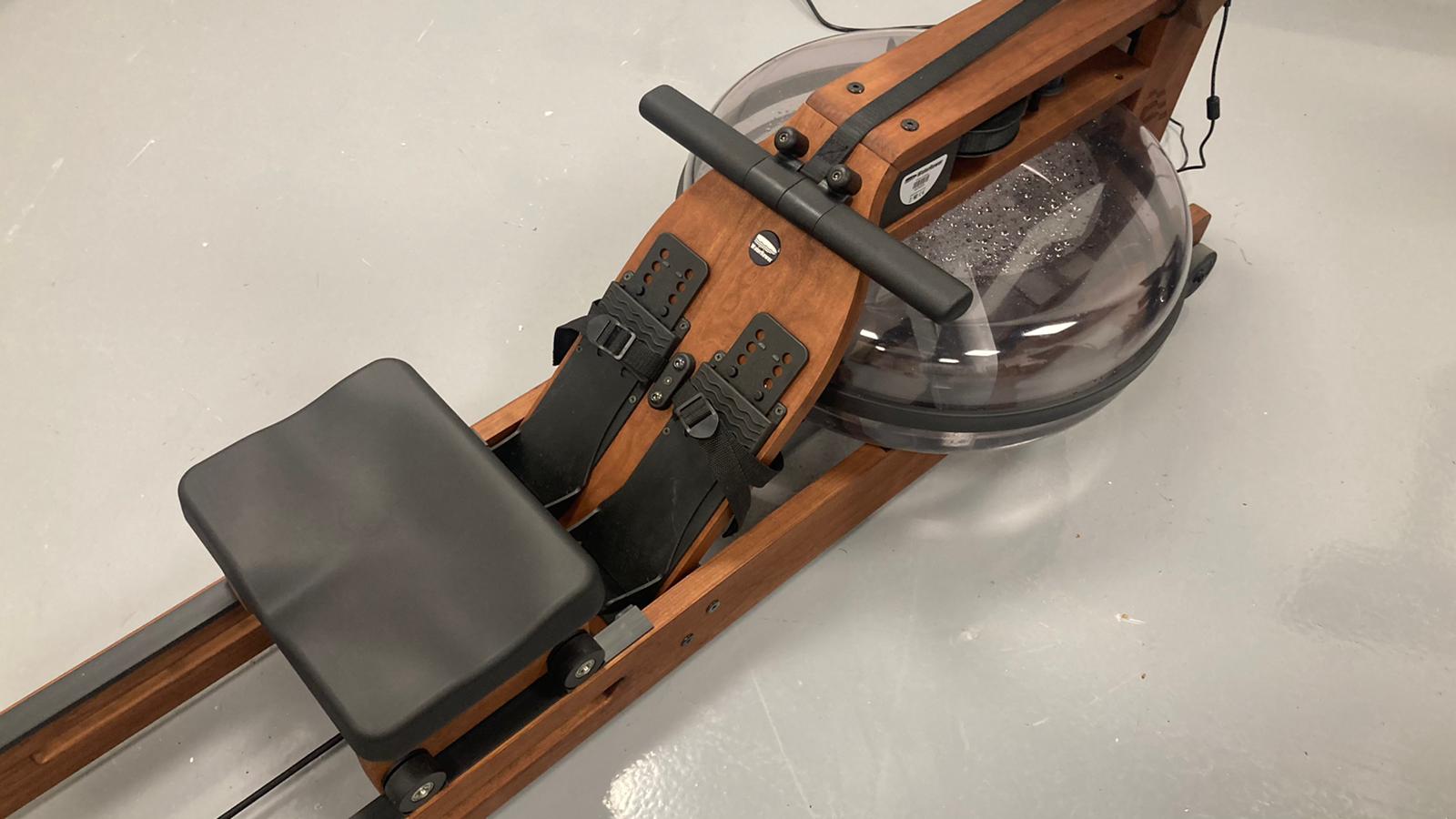
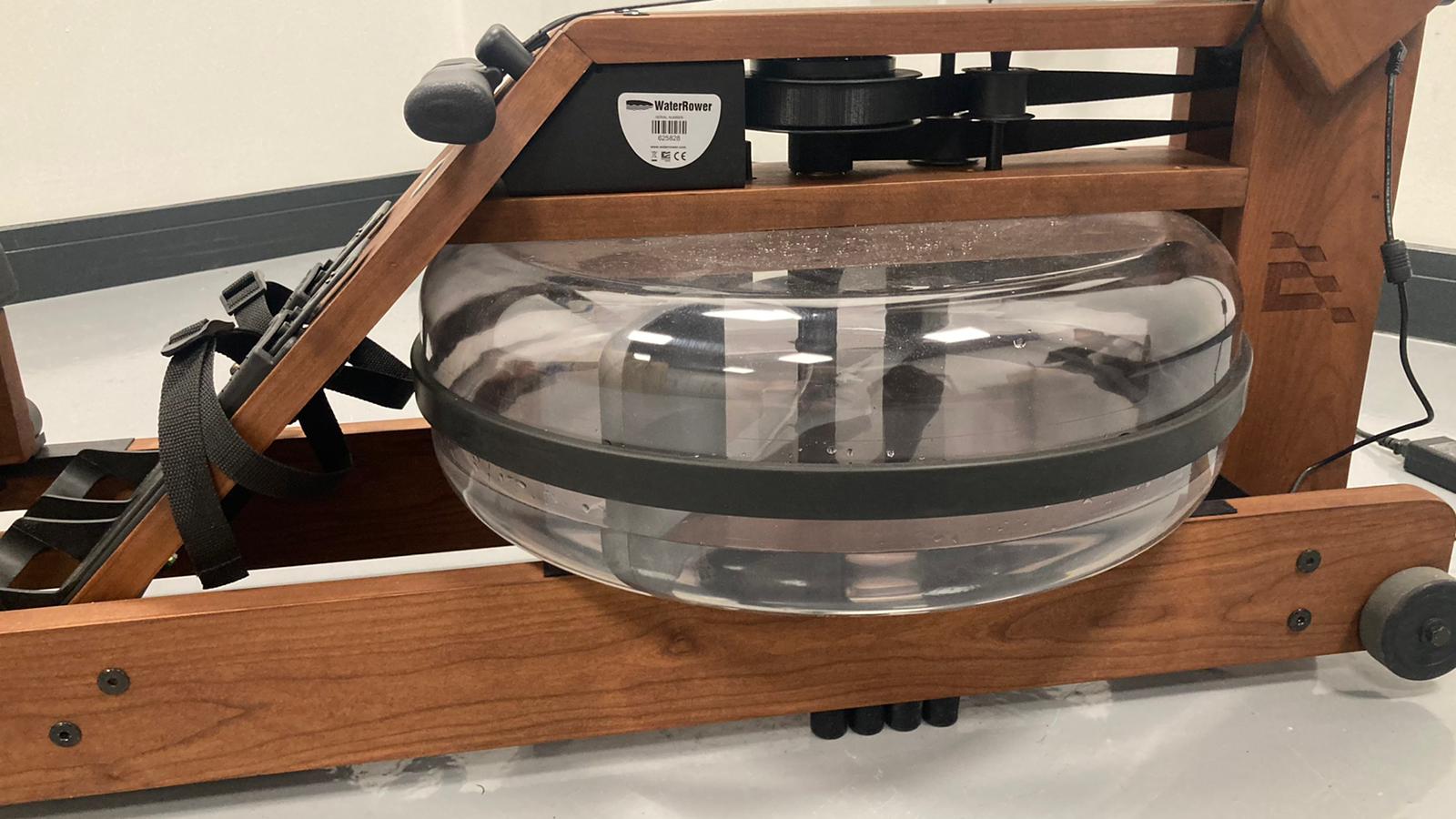
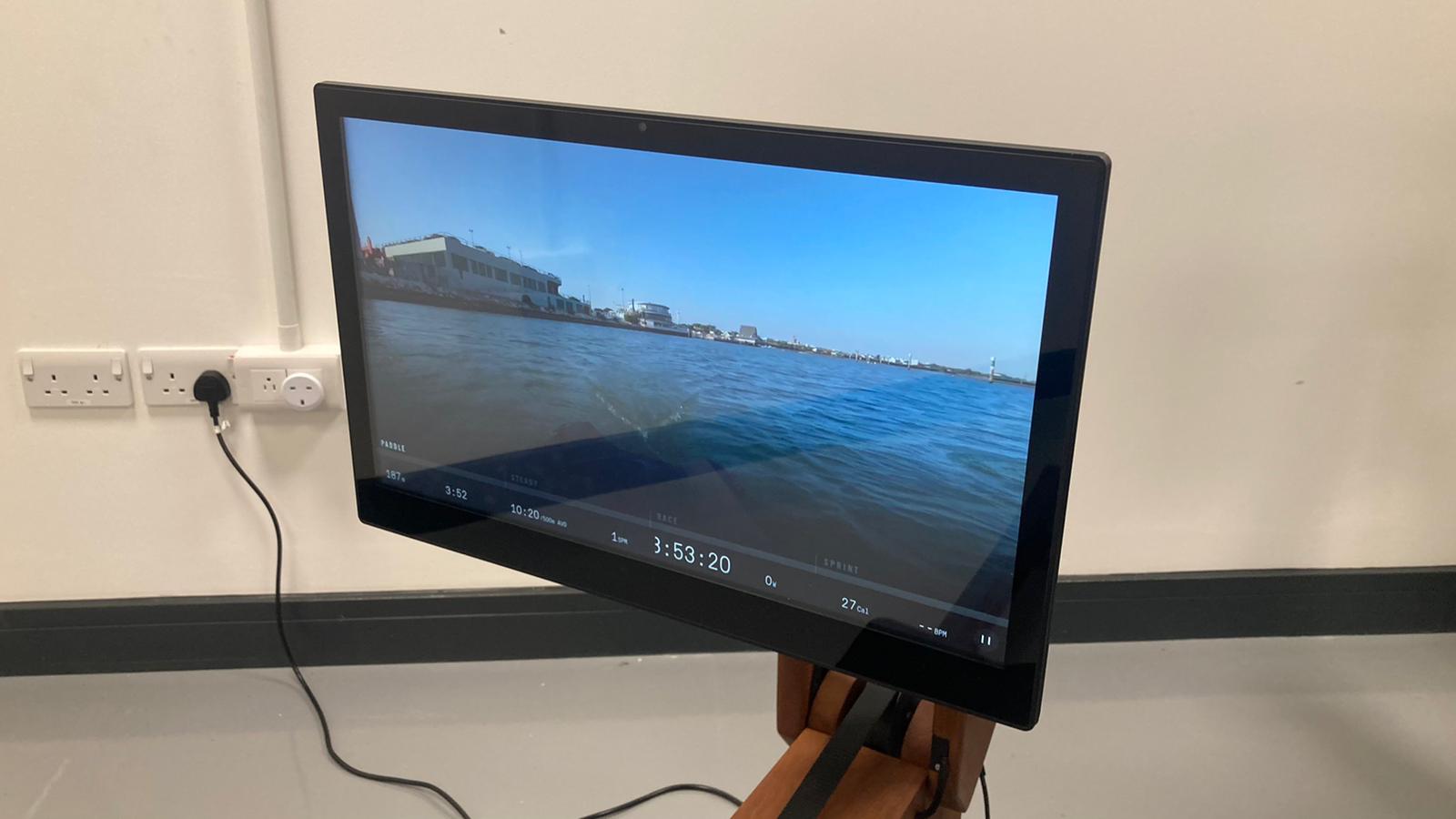
Specifications
Reasons to buy
Reasons to avoid
✅ You want a real looker: It is perhaps the most stylish model in this guide.
✅ You like open water rowing: The strokes have a realistic rowing feel.
✅ You enjoy games and challenges: Ergatta offers plenty of fun workouts and a supportive community.
❌ You have wide feet or mobility issues: It features a narrow foot plate and low seat.
❌ You are on a budget: This rower is on the expensive side, and the app membership is costly, too.
🔎 Ergatta Rower: Compact, quiet and beautifully designed, this water rower offers a fun-filled rowing experience at a premium price. ★★★★
The Ergatta Rower is the best water-based rowing machine we have ever tested, period. It is stylish, durable, and offers a great rowing experience. During our Ergatta Rower review, it particularly impressed us with its extensive workout gamification features.
The Ergatta Rower gamifies regular exercise sessions with workout modes such as “Meteor” and “Pulse” requiring you to increase and decrease your effort in order to hit targets. There is a fantastically fun, adrenaline-pumping race mode too, which sees you go head-to-head with several other members of the thousands-strong Ergatta community or friends you have connected with via the platform. As sporty sorts, we found this extra competitive element was a major motivator.
We also liked how the entire Ergatta platform experience was personalized to us. An initial 1,000 meter calibration test was used to determine our ability level, and workouts were adjusted accordingly.
Designed with apartment living in mind, the Ergatta's handcrafted cherry wood frame also looks fantastic. It can be folded flat and stored upright too, so it takes up a patch of floor little over 20 square inches when not in use.
The monthly membership costs means it’s on the expensive side, but if you are looking to replace your gym membership with this motivational machine then we think it is worth it.
There is one major caveat, though. The Ergatta rower features a narrow foot plate and low seat, making it less accessible to people with injuries and limited mobility. If you have knee pain or problematic hips, you may be better off with something more adjustable like the Aviron Strong Series Rower.
- Read our Ergatta Rower review
Attributes | Notes |
|---|---|
Design | Detachable water tank |
Max user weight | 500 lbs (227 kg) |
Additional costs | Ergatta app membership - $29/month |
Best value rowing machine
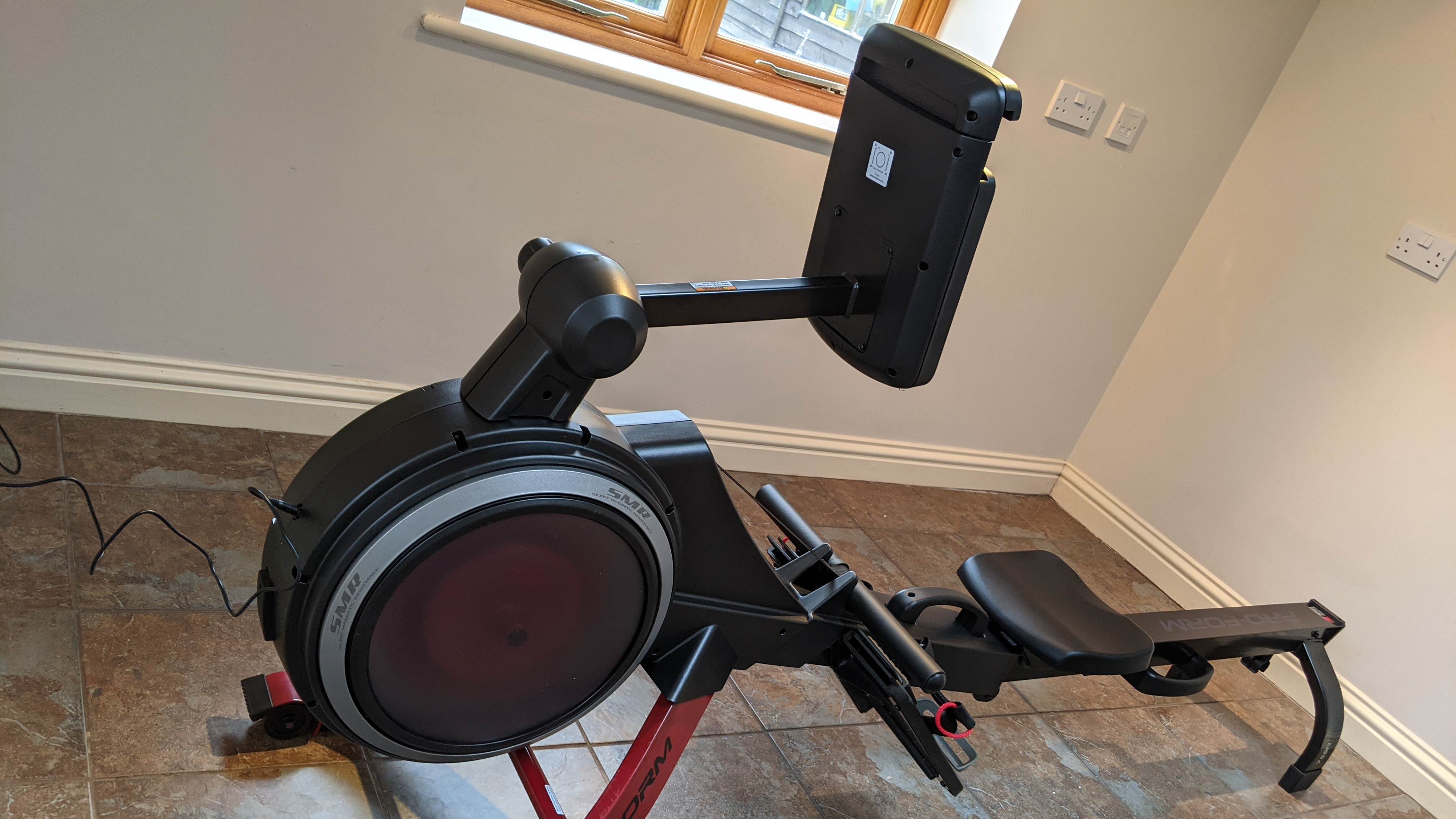
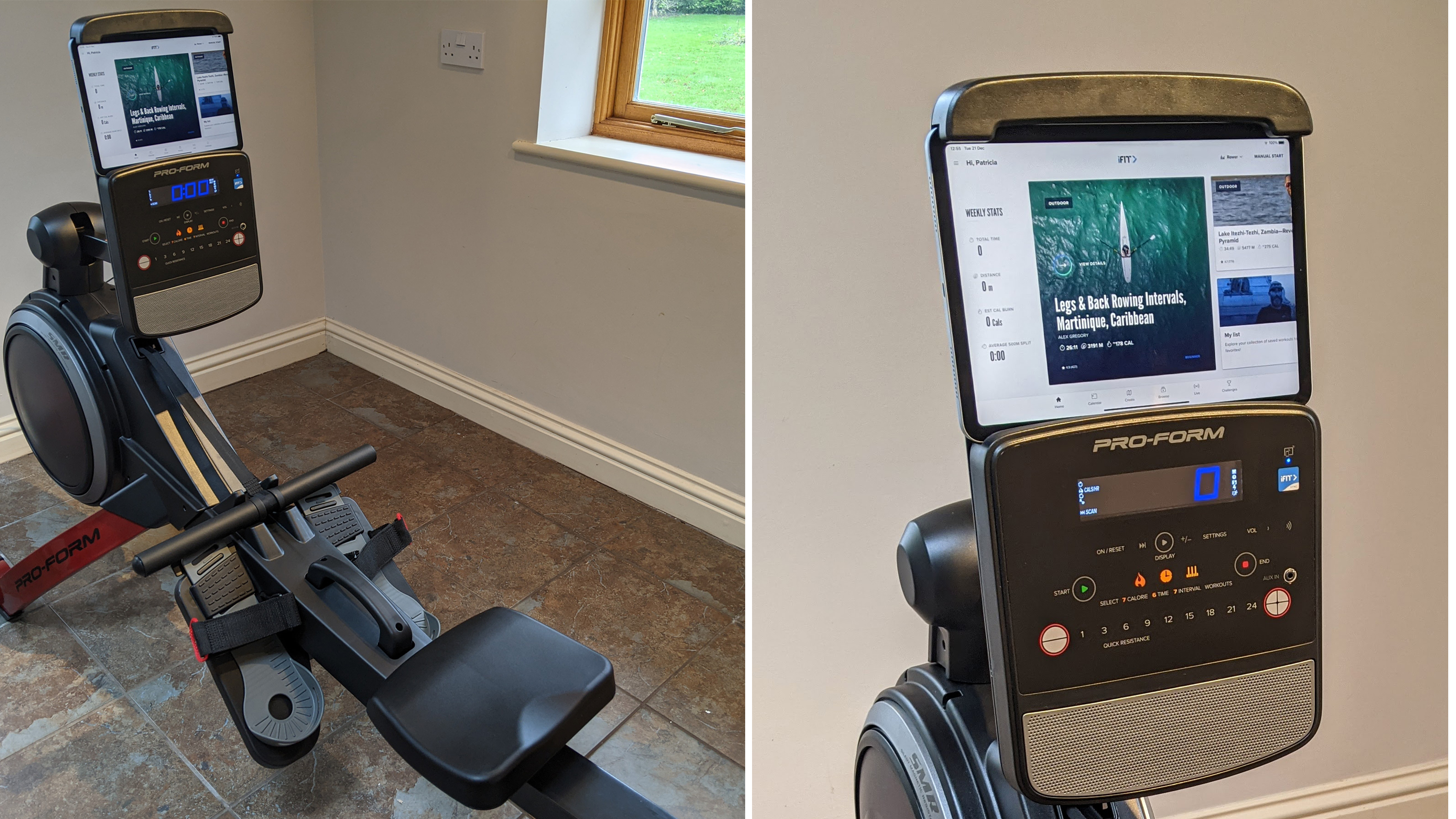
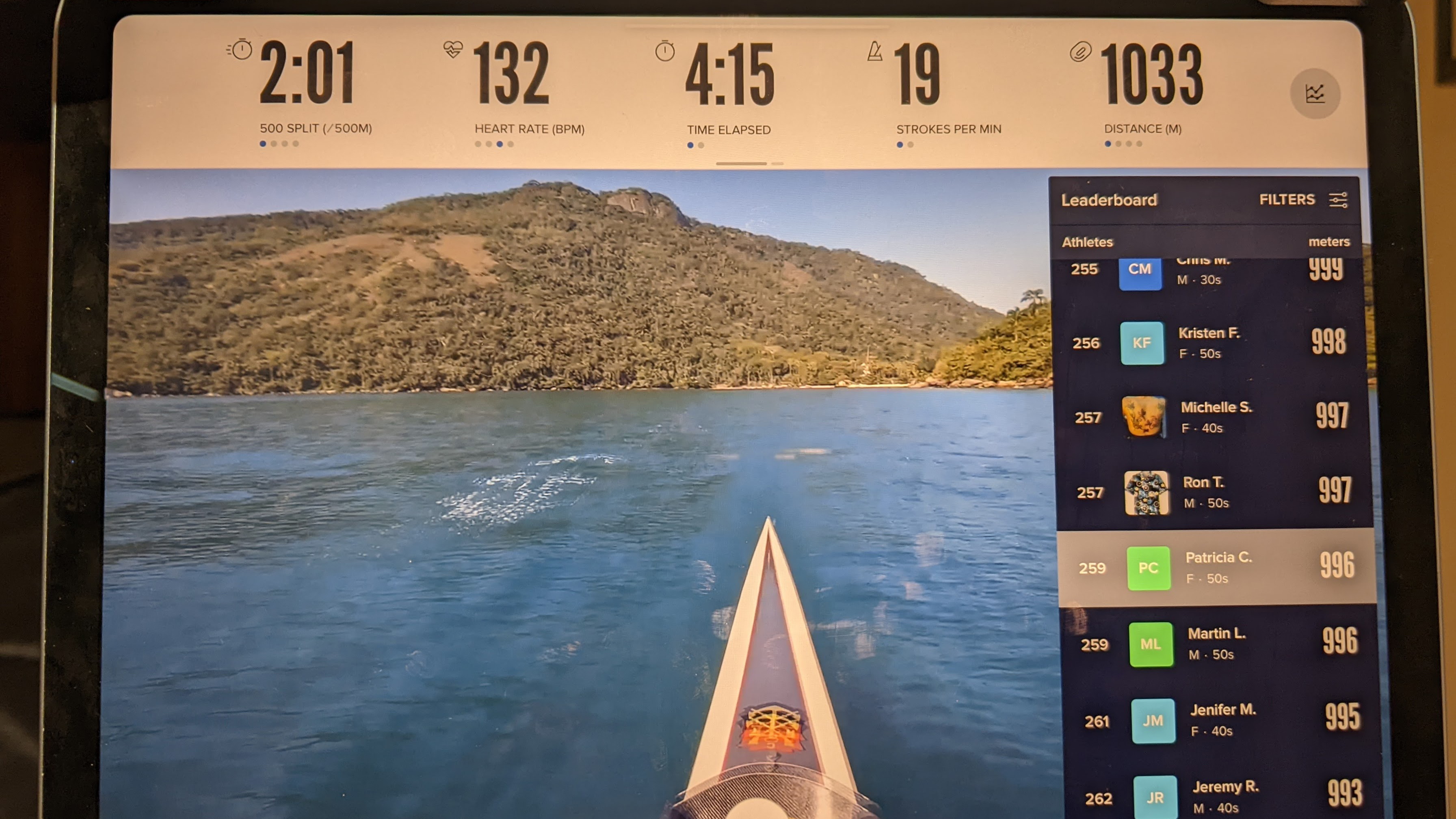
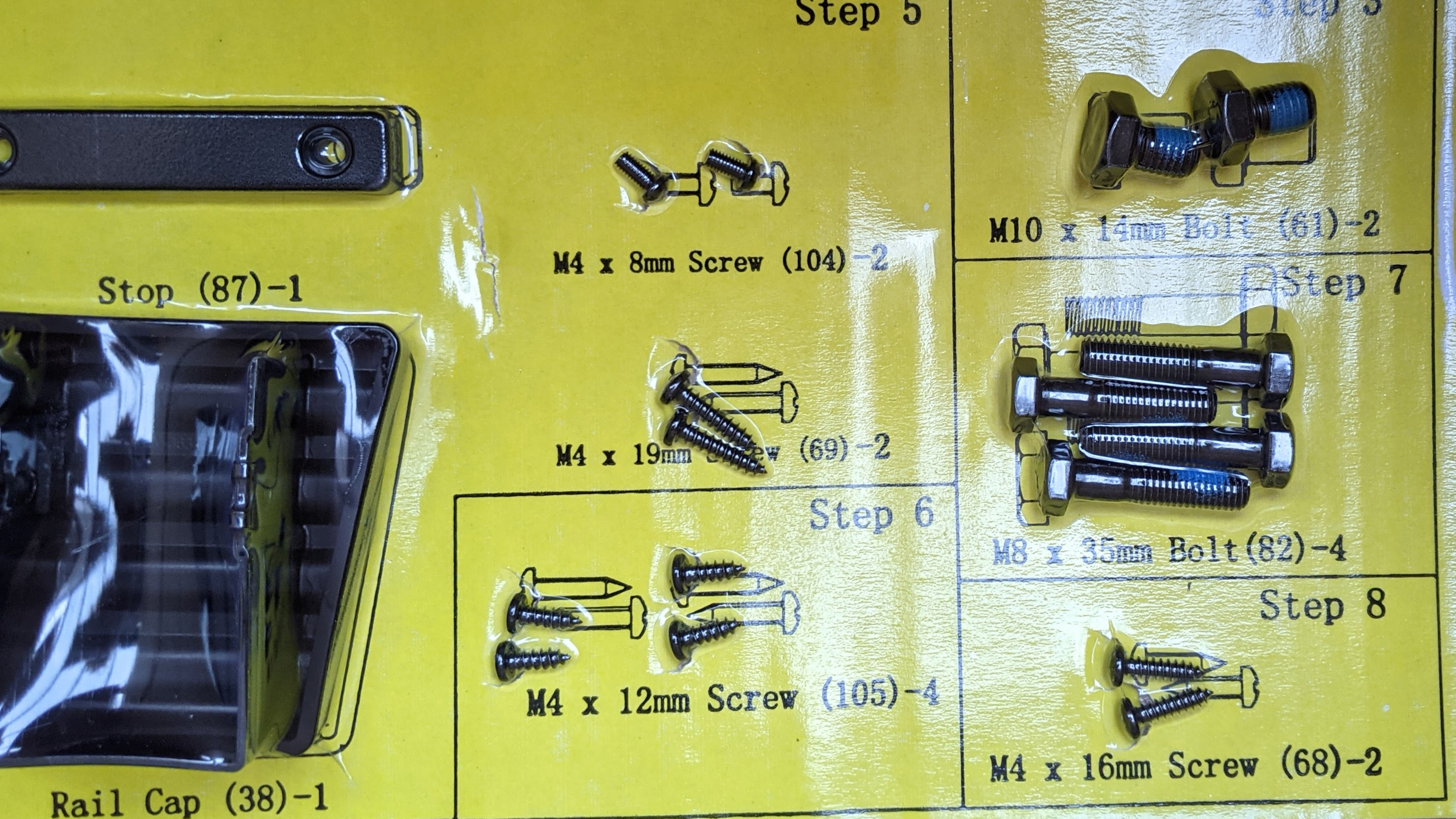
Specifications
Reasons to buy
Reasons to avoid
✅ You are on a budget: This rower strikes a good balance between quality and affordability.
✅ You do not have much space: It is compact and can be folded away.
✅ You want a quiet rowing machine: It makes little noise even during challenging workouts.
❌ You enjoy immersive rides and fun fitness classes: No touchscreen display.
❌ You want a sleek-looking rower: This rower is not particularly eye-pleasing.
🔎 Proform 750R: With its sturdy build, foldable design and a vast library of workouts, this rowing machine offers excellent value for money — but it has no frills typical of more premium machines. ★★★★
The Proform 750R is solid, quiet and comfortable. It is not flashy — there is no touchscreen display here and it is not built from aesthetically pleasing wood. But during our ProForm 750R review, we found it performs well, offering consistent, magnetic-based resistance and a whisper-quiet workout. If you are looking for a well-priced, well-built machine that does not come with unnecessary extras, then this is a perfect option at less than $600.
Like other Proform and NordicTrack models, this rower comes with a free trial to the iFit app, which contains plenty of workouts for you to follow — some led by famous Olympians. During classes, the resistance on your machine will be adjusted by your instructor’s prompts, which is a neat little extra.
However, to access this feature – and to be able to clearly see the workout – you will need to secure a tablet to the front of your machine. There is a basic digital display included with the rower, which will show you metrics such as calories, distance, speed, time and strokes per minute, but you will not be able to see the iFit classes on this.
Despite the lack of screen, we think you would be hard-pressed to find a better option at this mid-range price. The machine comes with 24 different resistance levels – we found the top end of this to be suitably challenging. It is also incredibly easy to fold away, making it a good option for those with limited floor space.
Be warned that the set-up process is quite tricky for this rower. The machine is incredibly heavy to move around – make sure you have a friend to help you with the installation process – and the screws come vacuum packed, which make them difficult to access. Once installed, the machine is solid and sturdy, but be prepared to sink some time into the set-up. It wheels into position too, though we only tried it on a hard floor. It might be harder to move on a carpet.
If you would rather have something lighter and more compact, consider splashing more on models like the foldable Echelon Smart Rower.
- Read our full ProForm 750R review
Attributes | Notes |
|---|---|
Design | Flywheel with 24 magnetic resistance settings |
Max user weight | 250 lbs (113.4 kg) |
Additional costs | App membership: iFit Train - $15/month / iFit Pro - $39/month |
Best rowing machine for beginners
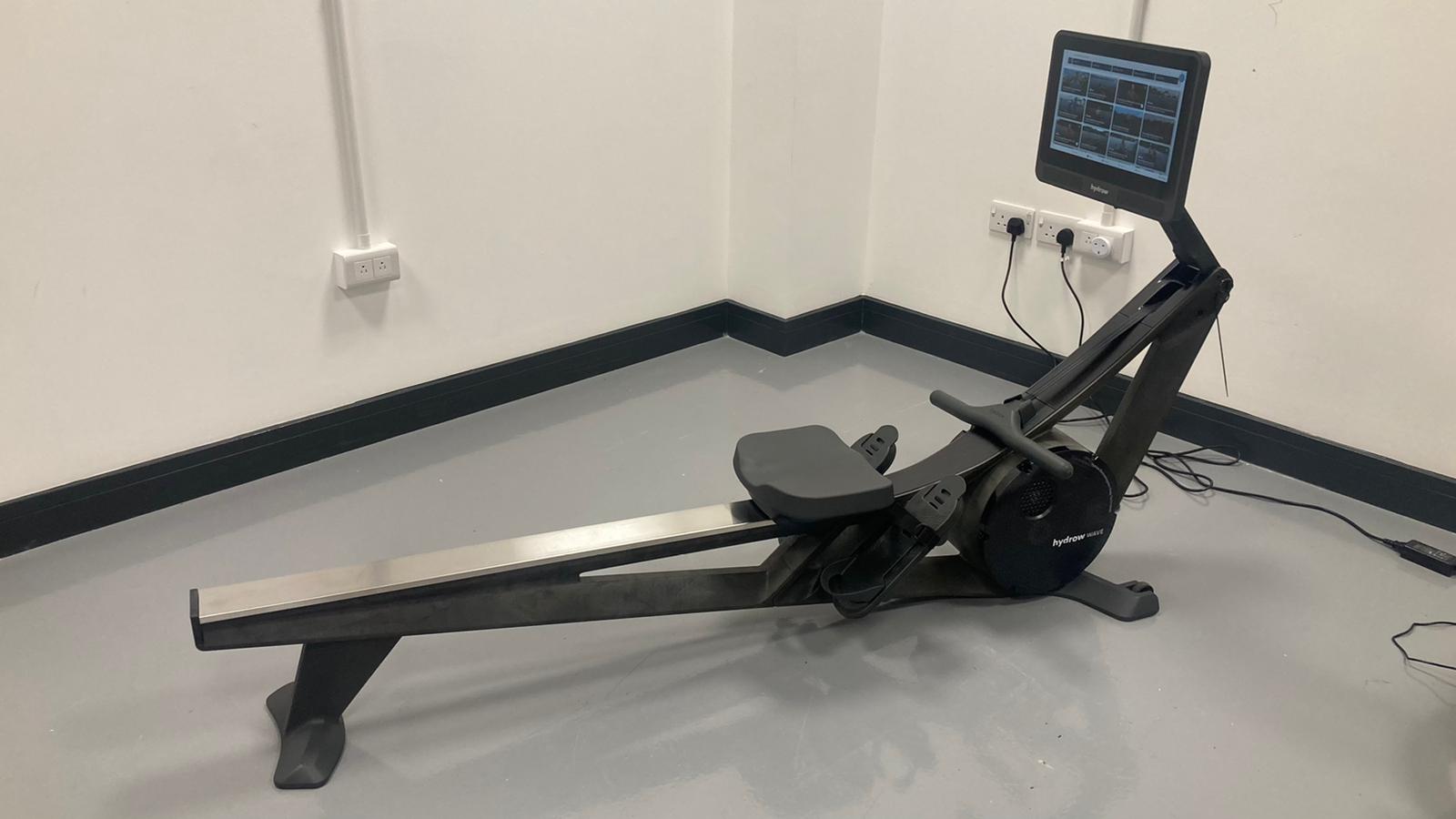
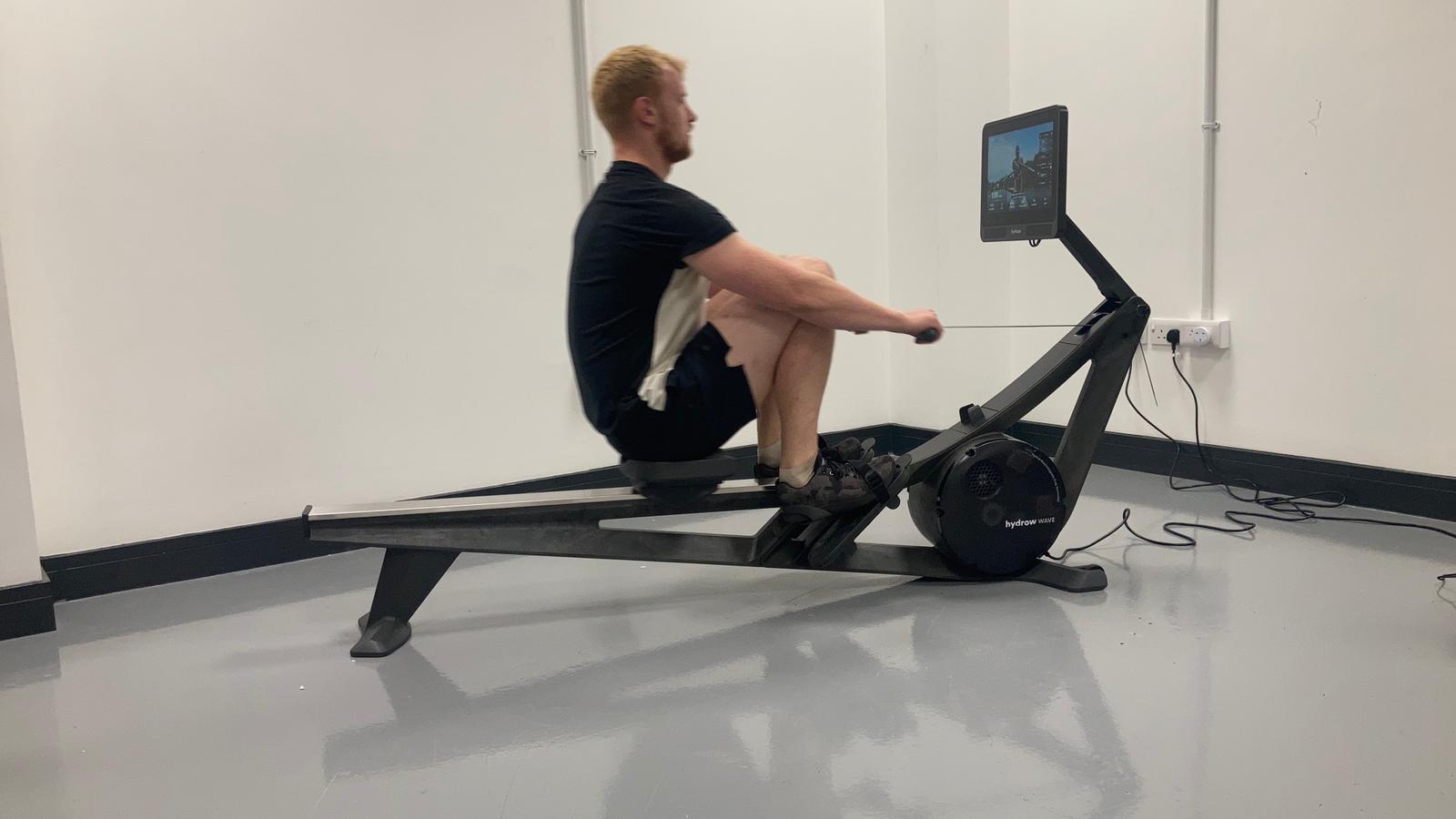
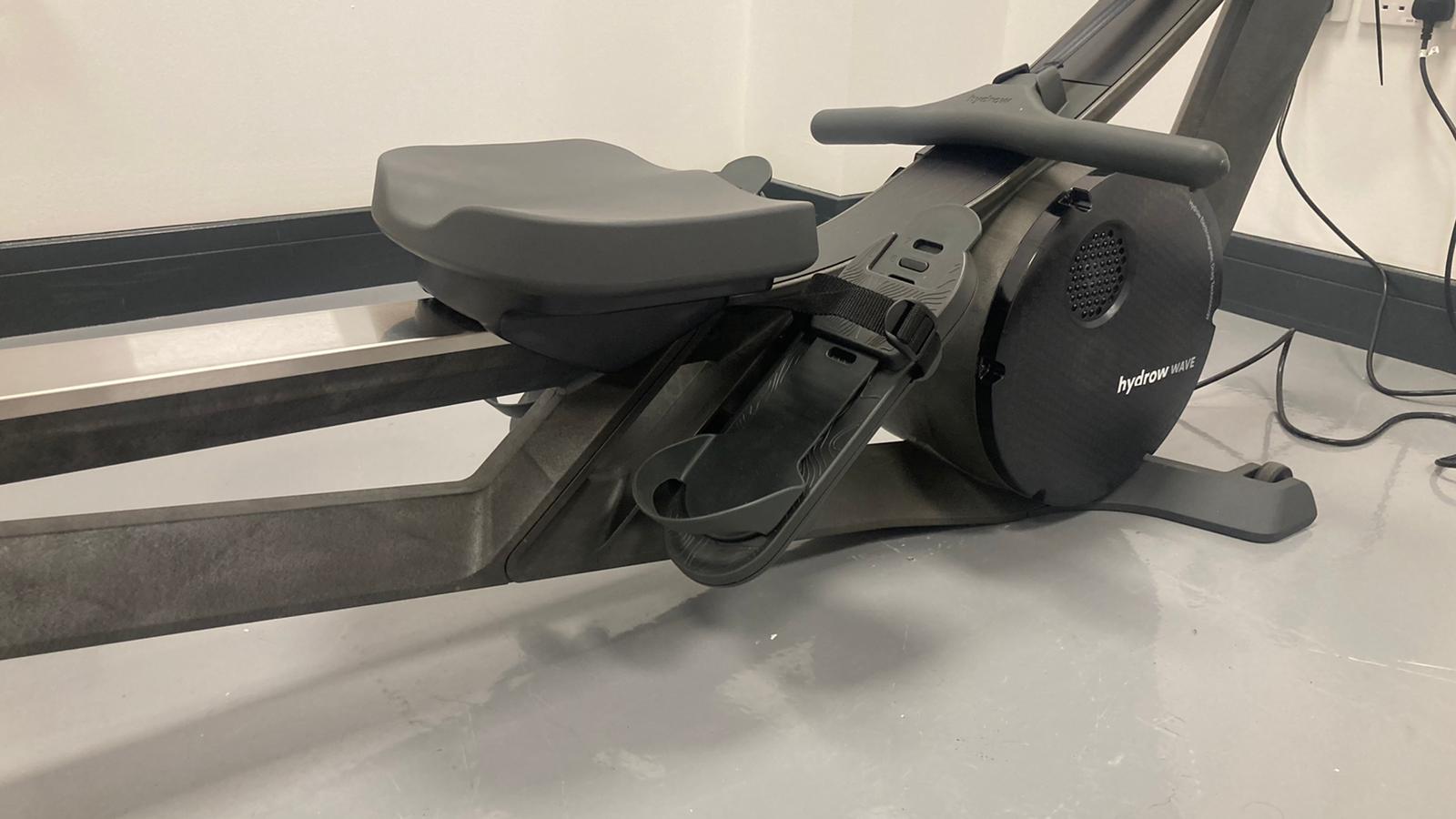
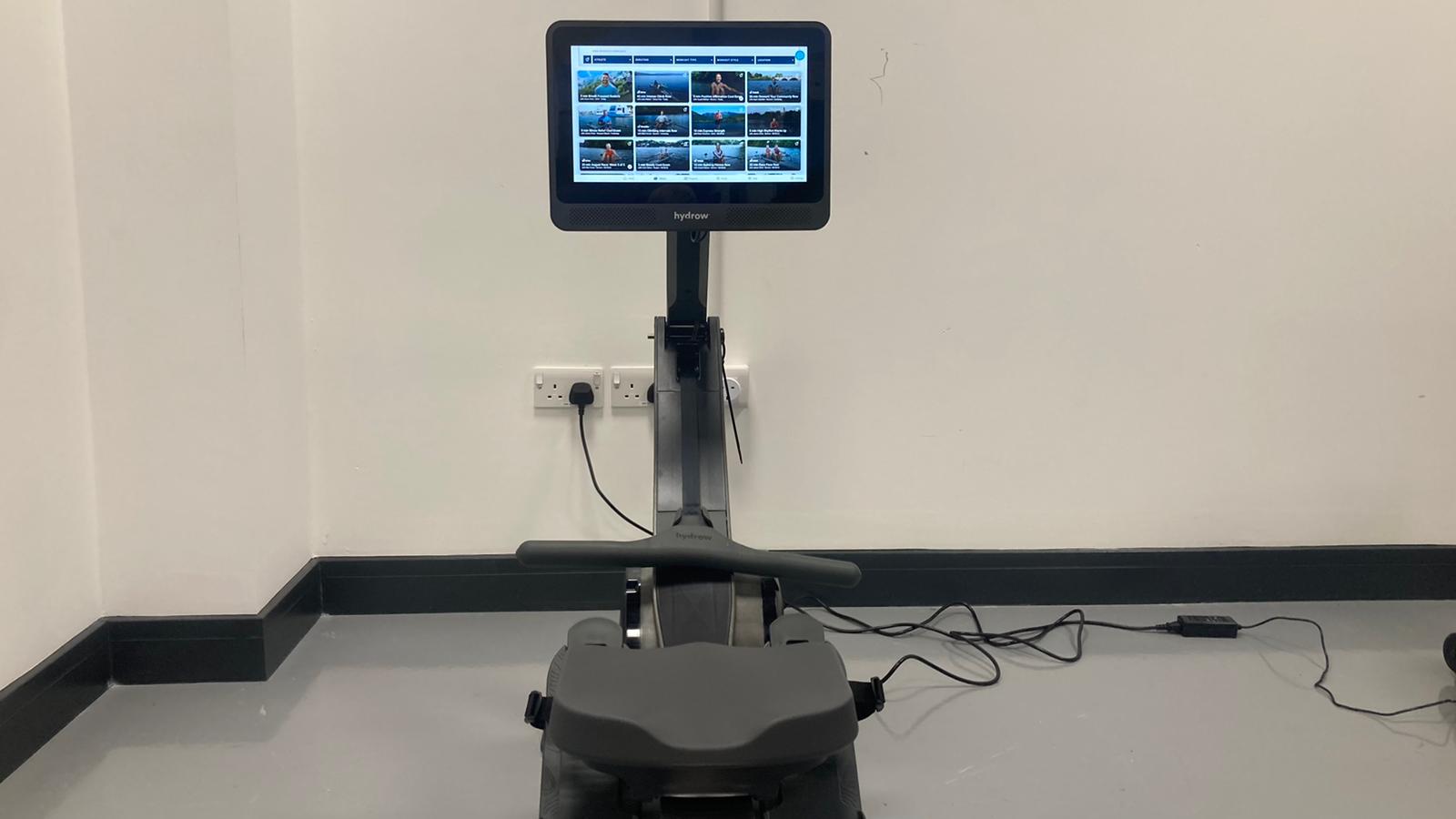
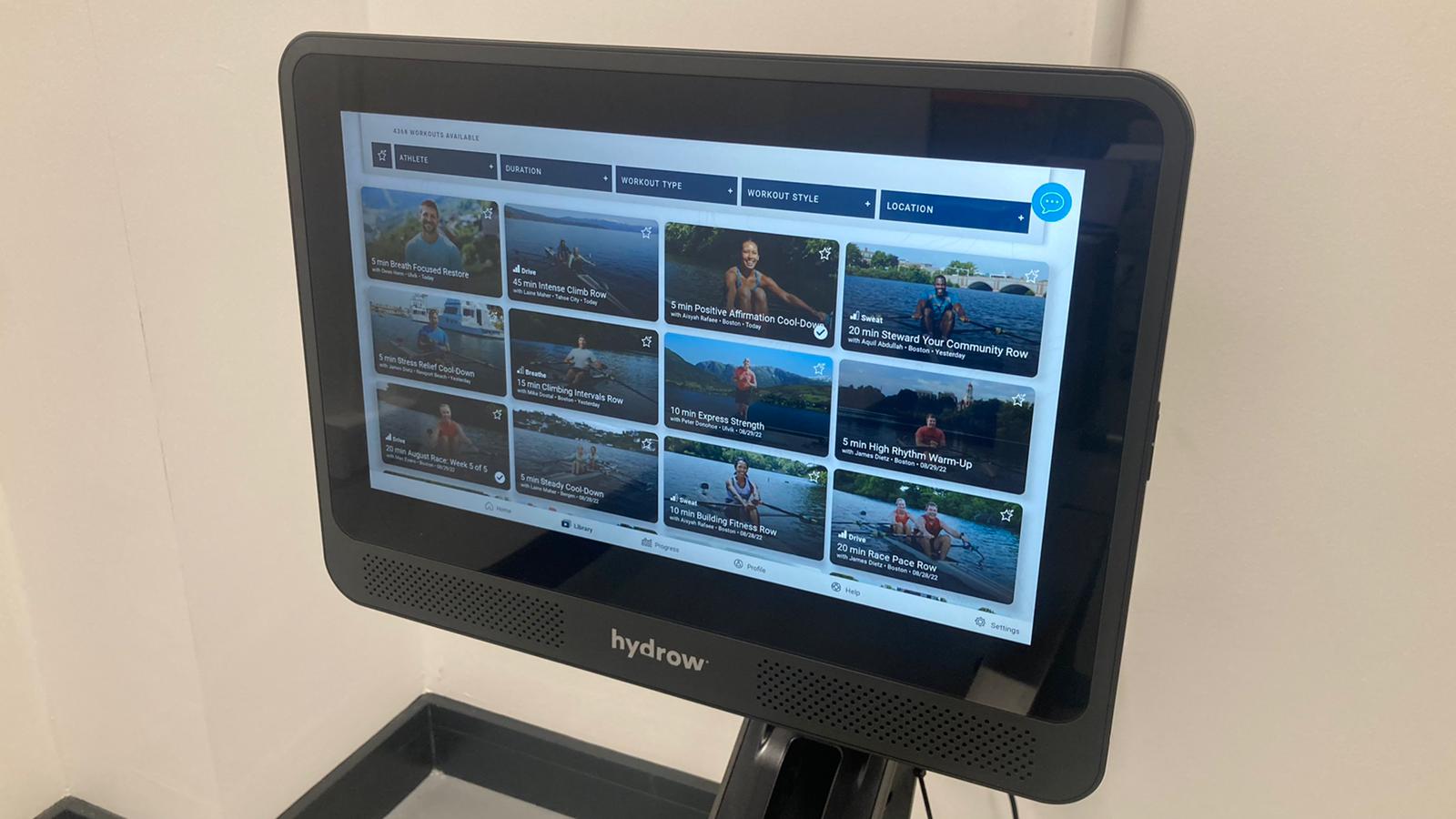
Specifications
Reasons to buy
Reasons to avoid
✅ You want coaching and fun games: The Hydrow Wave makes it easy to take up (and fall in love with) rowing.
✅ You want good value: It is well-built and feature-packed, but it does not cost the earth.
❌ You are looking for a space-saving design: This rower is compact, but it does not fold.
❌ You do not want to pay for subscriptions: The Hydrow platform requires membership fees.
🔎 Hydrow Wave: This compact rowing machine delivers fun workouts and a realistic rowing feel, and it is highly accessible to beginners, too. ★★★★½
Rowing is not as intuitive as running or cycling, which is why many beginners feel apprehensive about trying this calorie-busting activity. But with the Hydrow Wave rower, even a complete novice will quickly get a good grasp of rowing basics.
Having tested (and fallen in love with) the original Hydrow, our expert was understandably sceptical about any attempt to improve this impressive machine. Yet, credit where credit’s due, it has managed to do incredibly well during our Hydrow Wave review.
The inaugural machine scored top marks for its accessible and engaging rowing workouts, likable instructors and realistic electromagnetic resistance system, but lost points for its hard to accommodate dimensions and high asking price. The Hydrow Wave maintains the original’s winning formula of fun workouts and a real rowing feel, but packs all of this into a smaller, lighter machine. And the best thing? At $1,495, it’s $1,000 cheaper than its predecessor (and most models in this guide, by that matter).
Despite its significantly lower price tag, the Hydrow Wave still benefits from full access to the thousands of workouts available on the Hydrow platform (if you pay a monthly membership fee). Rather than taking you into an artificially lit studio — à la Peloton and the like — each of these sessions brings you aboard the rowboat of a former Olympian, professional athlete or elite coach for a follow-along class on some of the world’s most beautiful waterways.
It is for the reasons listed above that the Hydrow Wave equals the industry-standard Concept 2 RowErg as our top-scoring rowing machine. In fact, we think it is more beginner-friendly than the iconic Concept2. So if you are looking for a new way to get in shape at home, we can’t recommend it highly enough.
- Read our full Hydrow Wave review
Attributes | Notes |
|---|---|
Design | Software-adjustable electromagnetic resistance levels |
Max user weight | 370 lbs (170 kg) |
Additional costs | Hydrow app membership - $44/month |
Best rowing machine for fun workouts
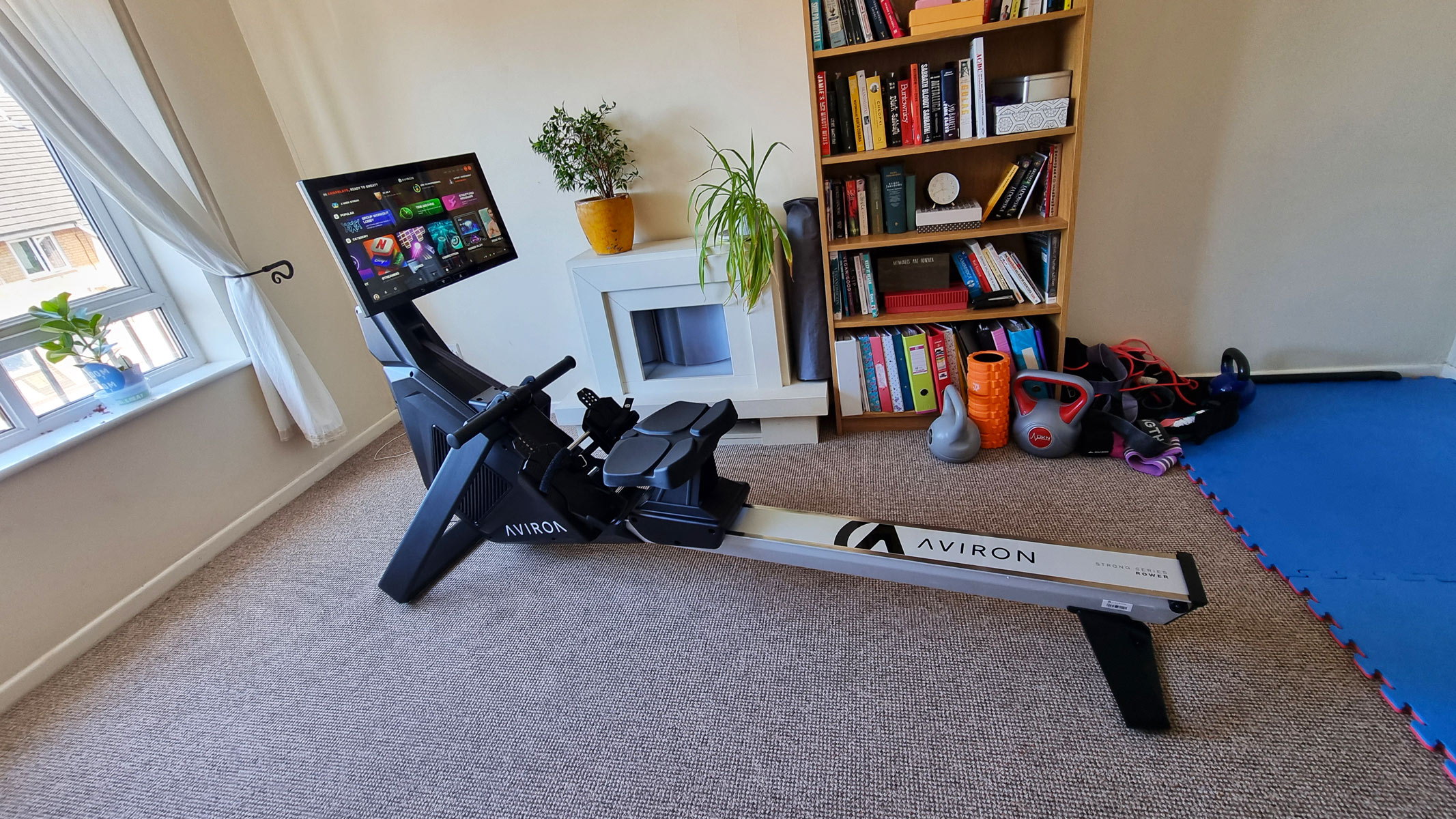
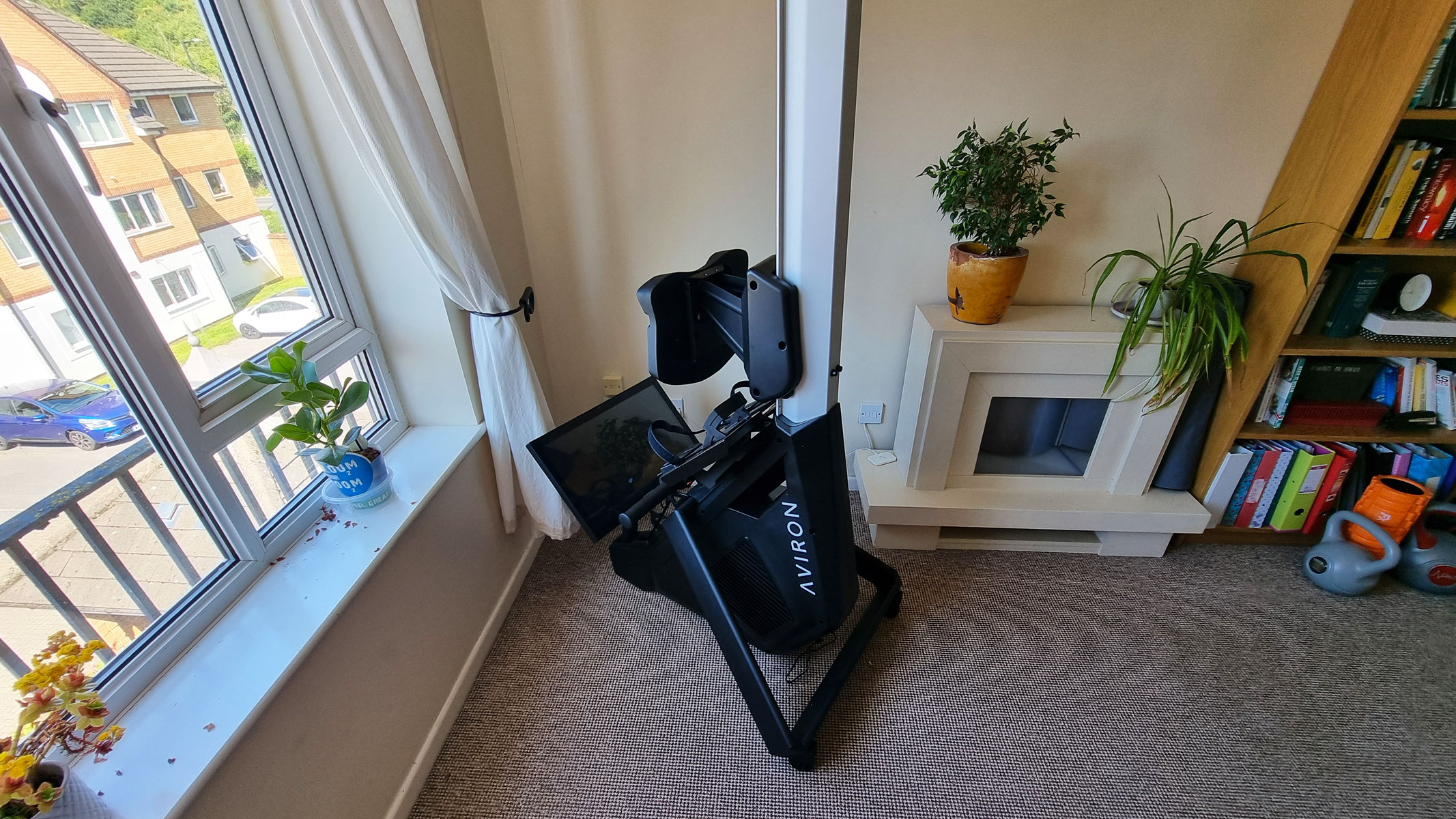

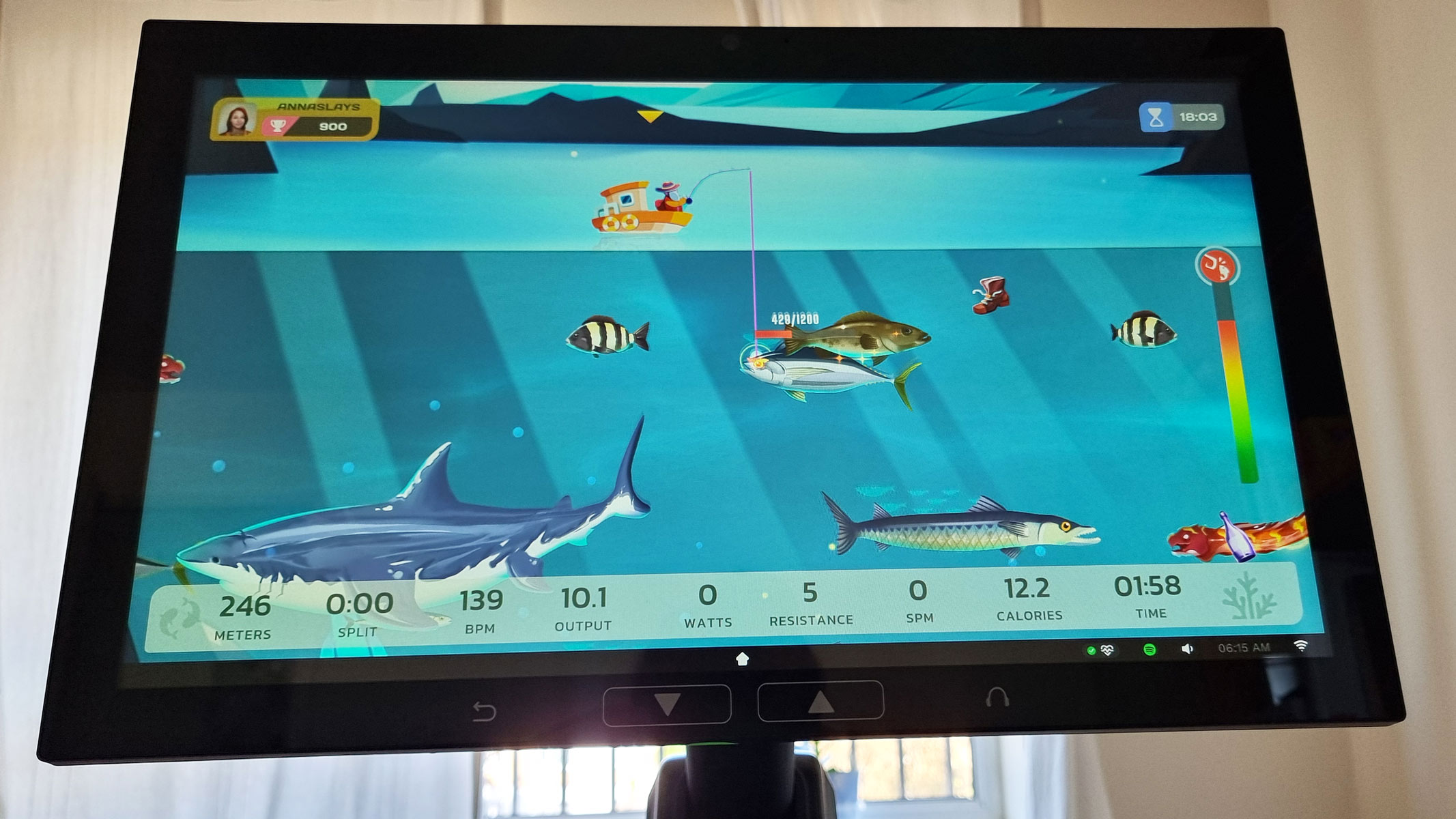
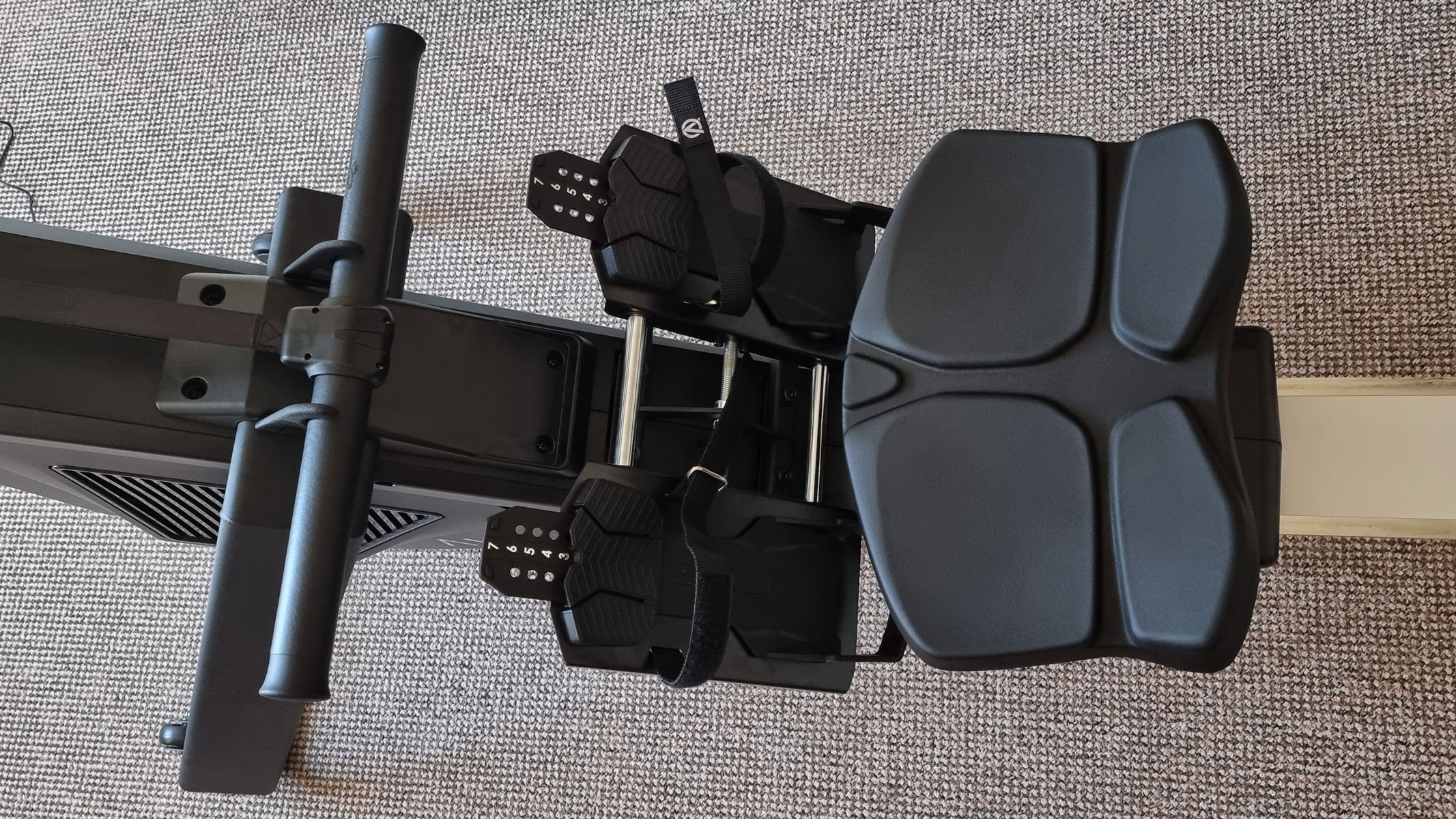
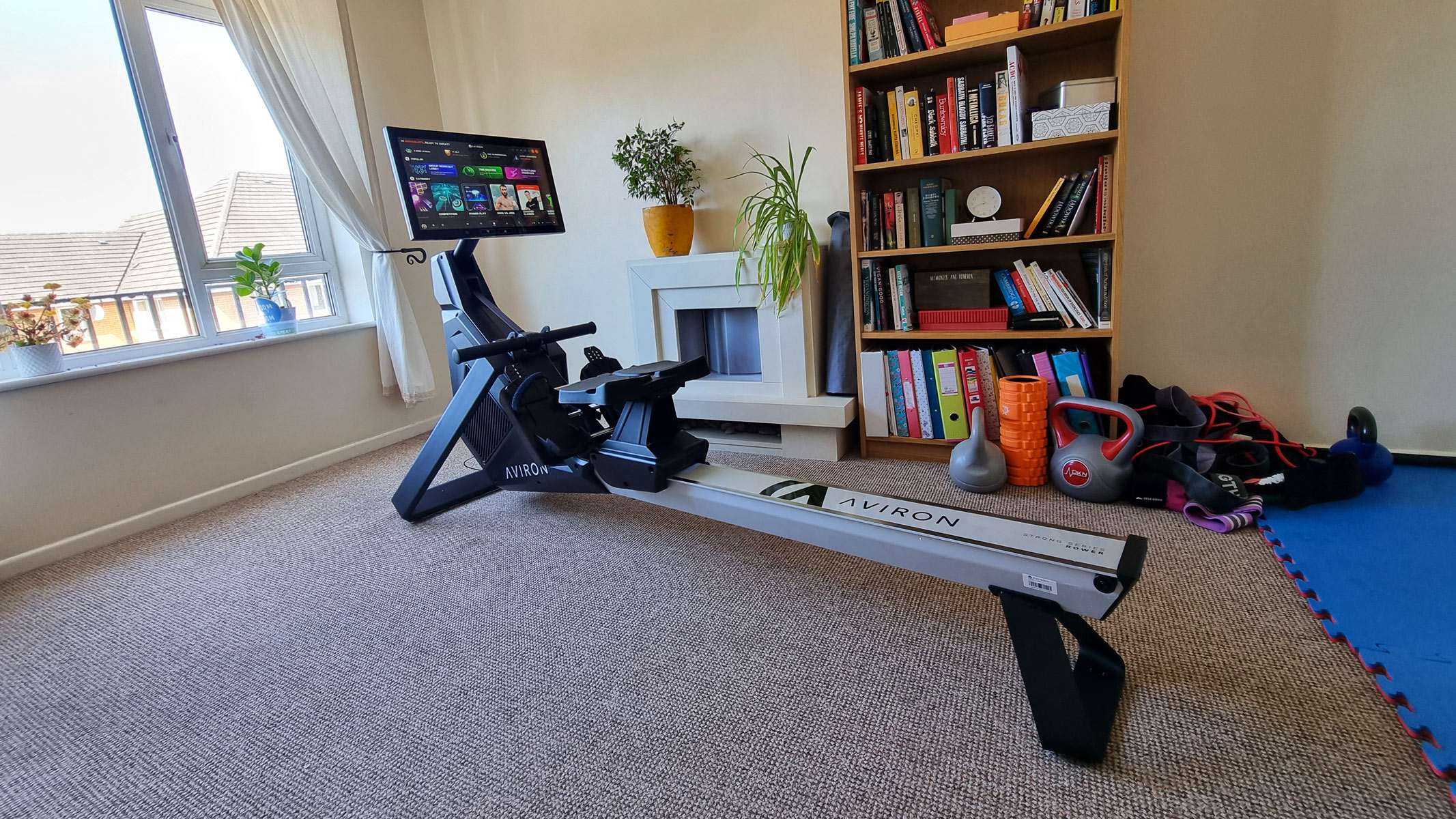
Specifications
Reasons to buy
Reasons to avoid
✅ You struggle with regular exercise: This machine will get you hooked on rowing through fun games, races and challenges.
✅ You have limited mobility: It features a high seat and widely adjustable footplates.
✅ You want something long-lasting: It is sturdy and durable, and comes with a 10-year warranty on the frame.
❌ You want something small and portable: It is heavy and takes up a lot of space, even when stored upright.
❌ You are on a budget: This rower is pricey and its fun features are subscription-only.
🔎 Aviron Strong Series Rower: This sturdy and resilient rowing machine delivers a smooth, comfortable ride and mind-boggling array of fun features, making it a great choice for most people — that is, as long as you overlook how big and pricey this rower is. ★★★★½
If you want to make your rowing sessions fun, you can't go wrong with the Aviron Strong Series Rower. This rowing machine offers a mind-boggling array of features designed to keep you coming back for more, from addictive games and rowing challenges to Power Play races against other Aviron users. With the Strong Series Rower, you can do your workouts while watching your favorite streaming services or row to the footage of beautiful sceneries from all across the globe. Plus, if you do a great job with your workouts, you can even land on the leader boards and unlock new features. The Aviron Strong Series Rower is designed to get you hooked on exercise — and does it exceptionally well.
The first thing we noticed about this rowing machine is that it was well sturdy. Heavy and resilient, it holds up to 507 lbs (230 kg), making it accessible to heavier users and stable during intense workouts. During our Aviron Strong Series Rower review, we were also impressed by its smooth, quiet strokes and inclusive design — this rowing machine has an unusually high seat and widely adjustable footplates, making it accessible to larger individuals and those with limited mobility.
However, there are two major downsides to the Aviron Strong Series Rower: size and cost. This rowing machine is priced at around $2,499 (plus it requires subscription fees to access the fun features) and it takes up a lot of space, even when stored upright. If you are looking for something smaller and easier to store, but you do not want to compromise on fun features, the Ergatta Rower and the Hydrow Wave may be better options for you.
- Read our full Aviron Strong Series Rower review
Attributes | Notes |
|---|---|
Design | 16-level dual air and magnetic resistance system |
Max user weight | 507 lbs (230 kg) |
Additional costs | Aviron app membership: $24/ month billed annually or $29 on a pay-monthly basis |
Best for rowing machine for small spaces
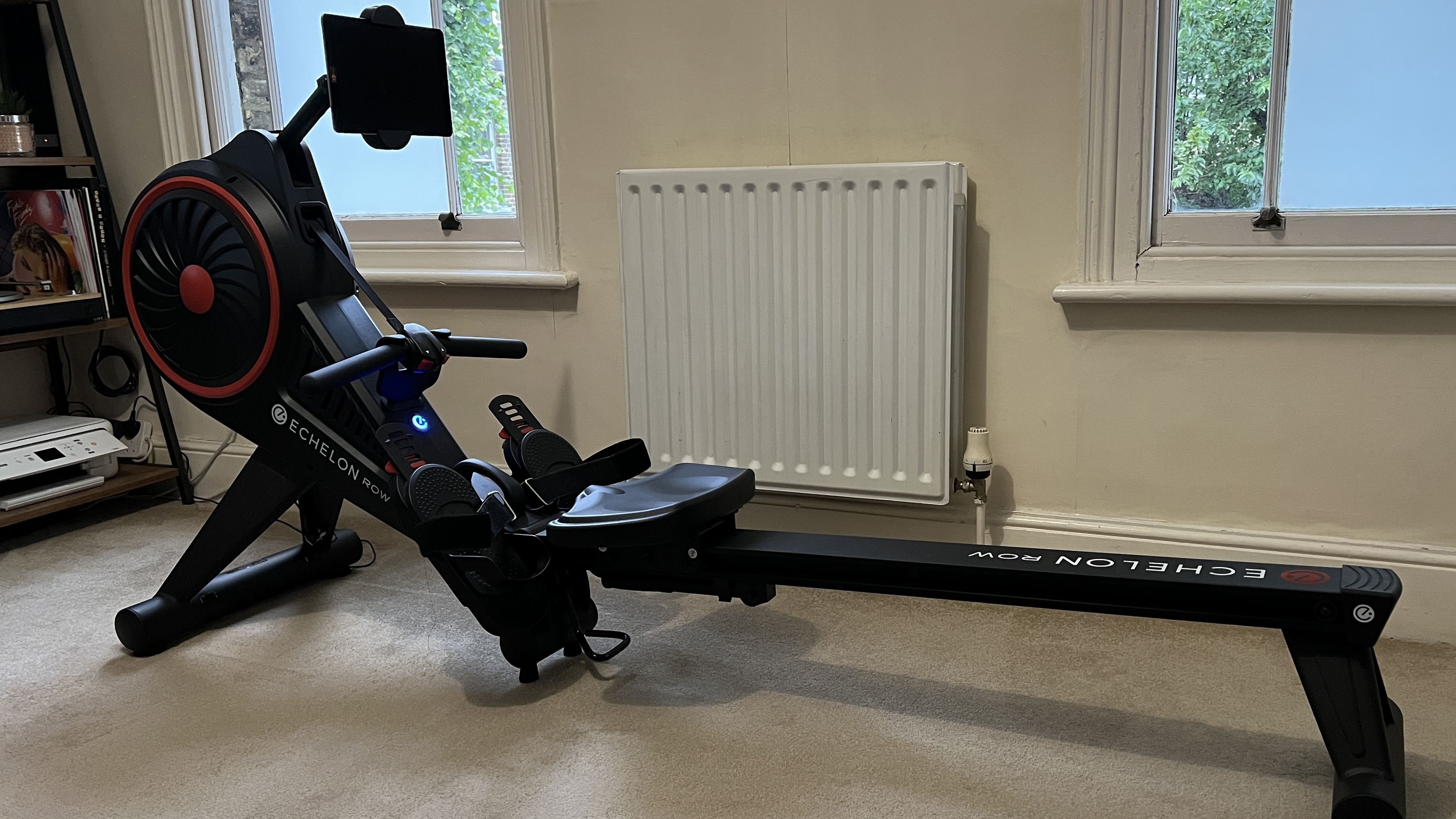
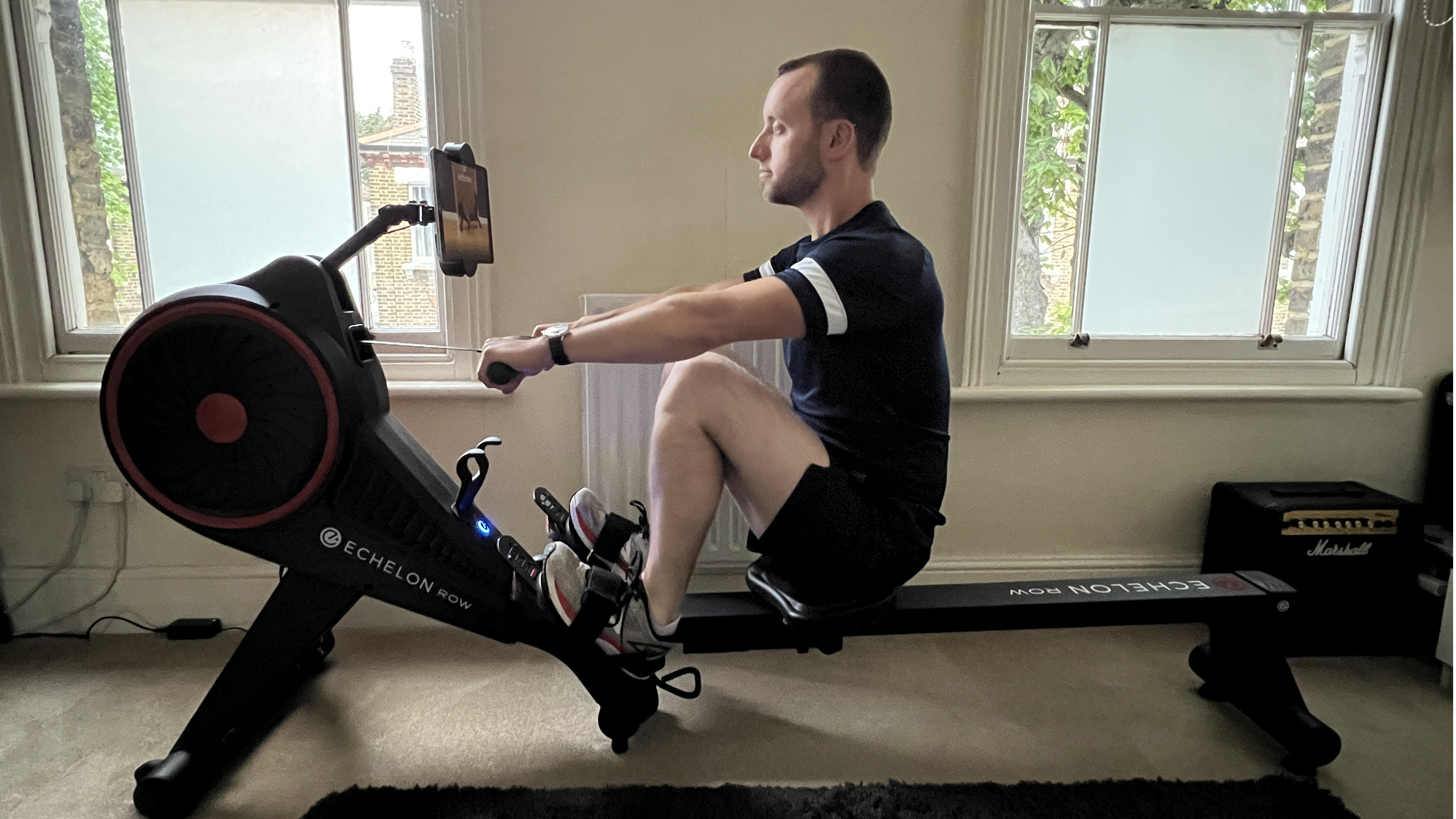
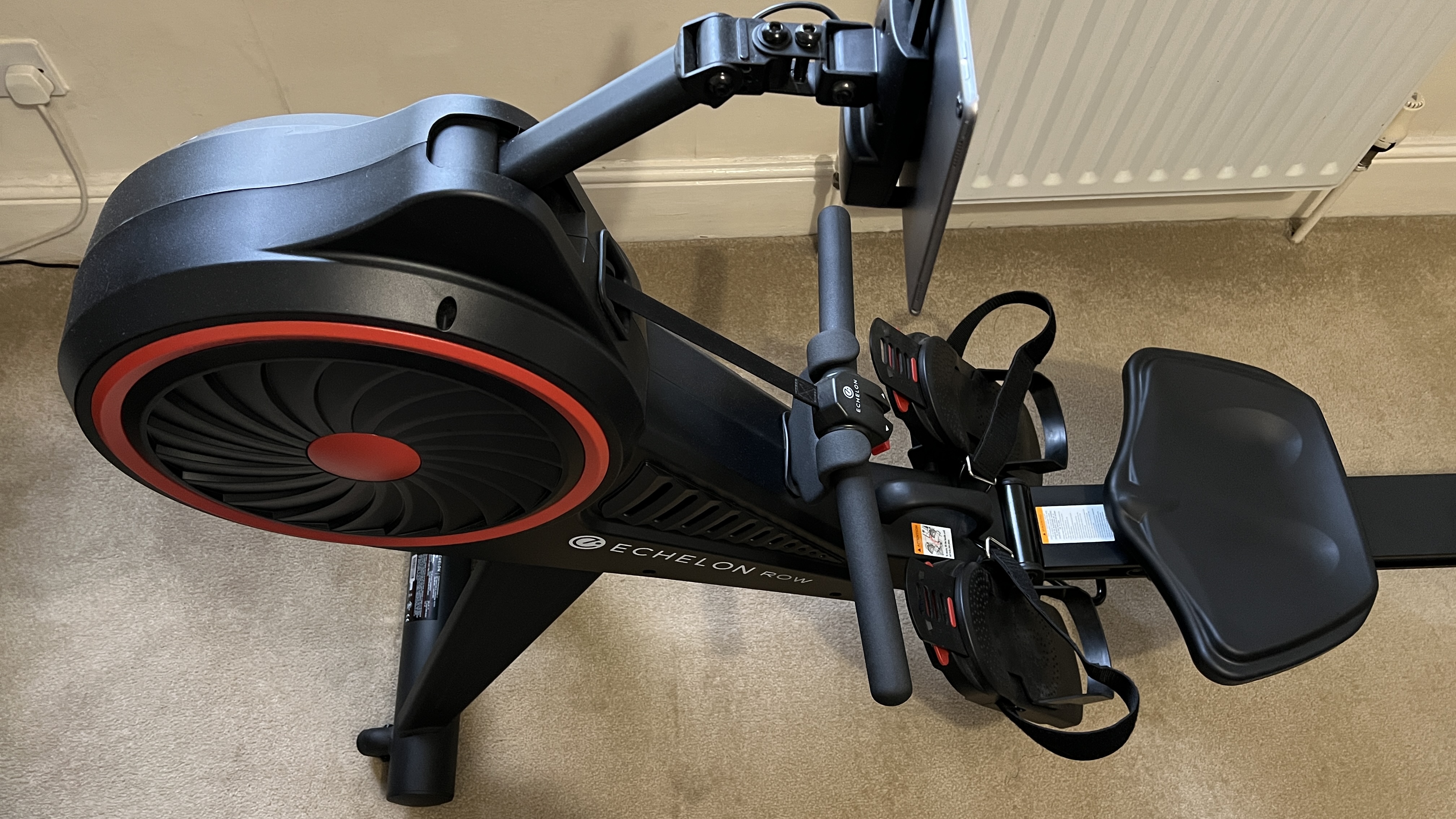
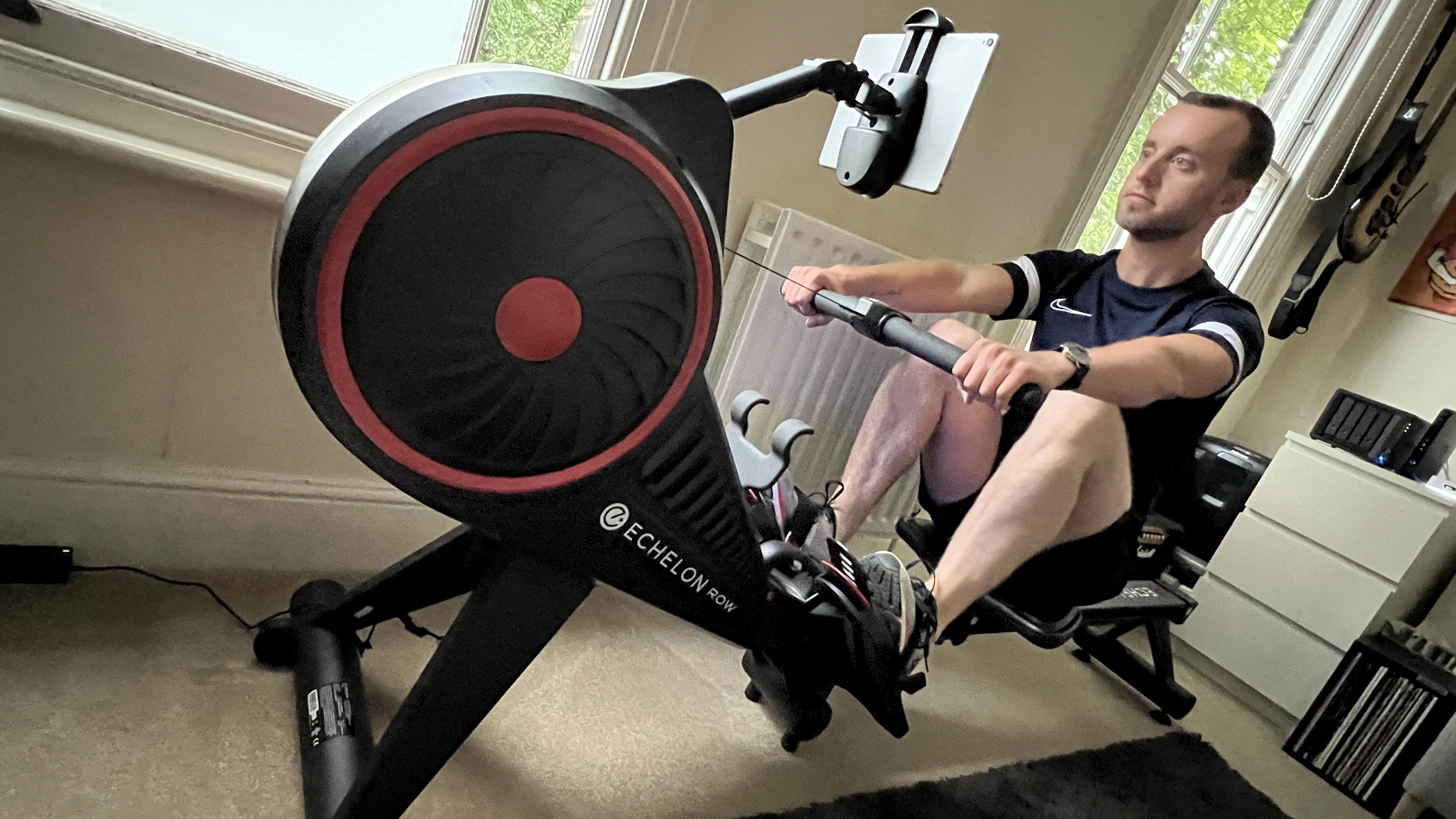
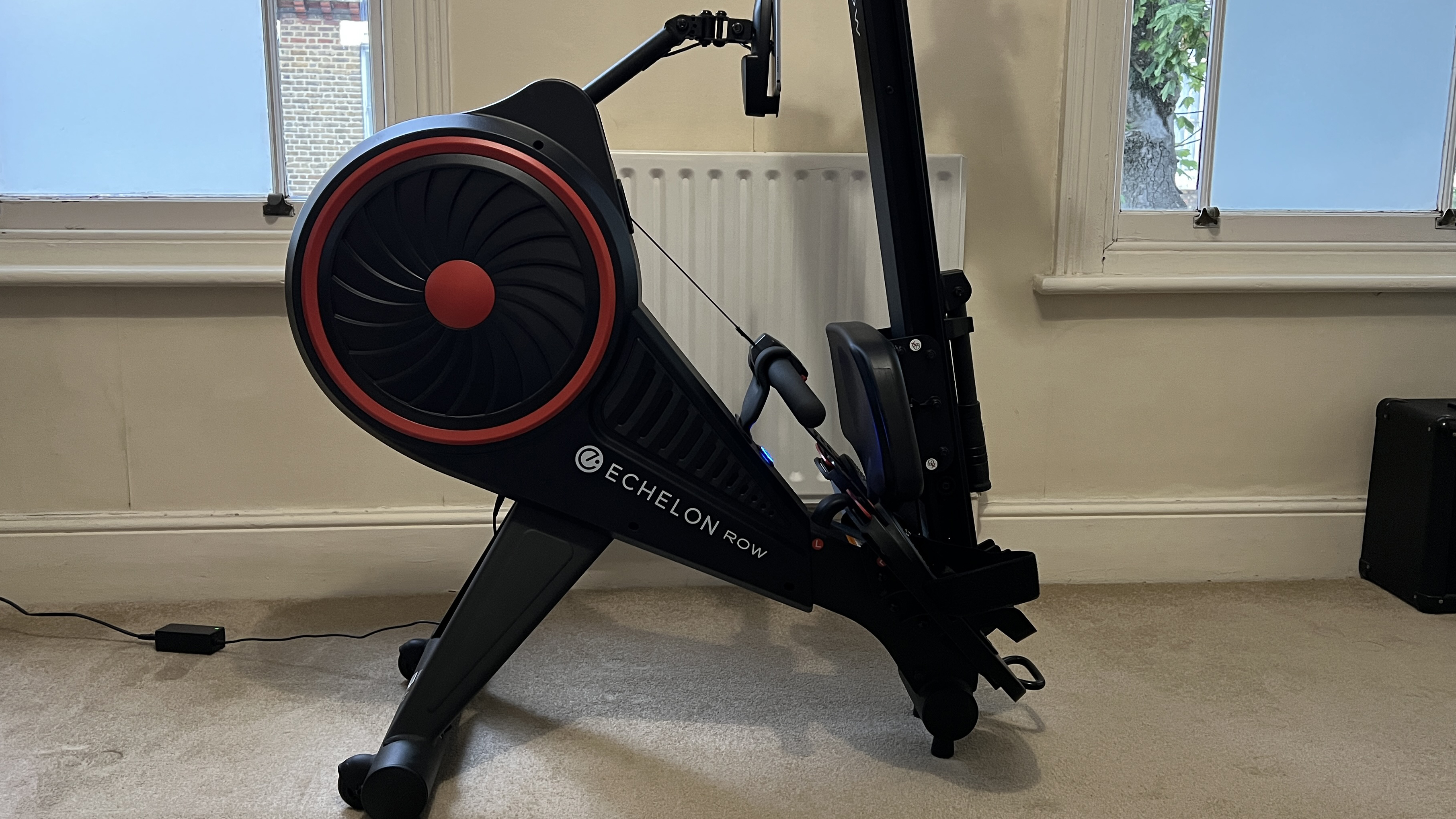
Specifications
Reasons to buy
Reasons to avoid
✅ You are short on floor space: This compact rower features a foldable design.
✅ You enjoy fitness classes: The Echelon app is packed with fun workouts.
❌ You are looking for detailed workout tracking: No integrated display.
❌ You want the frills: It is reasonably priced, but at the expense of premium features.
🔎 Echelon Smart Rower: This reasonably priced foldable rower combines excellent rowing performance with a space-savvy design — but it has no built-in display. ★★★★
Foldable rowing machines are a perfect option if you do not have much floor space available, or if you prefer to keep your exercise machines out of reach of children and curious pets — and this sleek piece of kit is among the best on the market in that regard.
Slickly designed and easy to fold away, the Echelon Smart Rower is a stylish and convenient bit of kit for home rowers. During our Echelon Smart Rower review, we tested it out for several weeks and enjoyed the vast range of classes available via the app, as well as the whisper-quiet magnetic resistance on the machine.
There is a lot to like about this particular rower. We were really impressed with how easy it was to set up (although it was heavy to move around) and the foldable mechanism is very straightforward to operate. And despite the folding hinge, the machine felt solid and sturdy throughout our rowing sessions.
There is no screen, which is a shame as you need to view the Echelon app to track your metrics. Instead, there is an ‘arm’ that can hold your tablet or phone (we would recommend sticking with a tablet, as phone screens are too small.)
At $999, this is a fairly mid-range option, but prices can soon rack up when you calculate the additional cost of the Echelon app subscription ($34.99 per month.) Without the app, you do not get any feedback on things like resistance levels or your speed – which means you can’t really track your progress.
There are a wealth of classes available on the app though, so if you need a little extra motivation to get going then this could be a great option. It will certainly look the part in anyone’s home gym, thanks to its sleek design.
- Read our full Echelon Smart Rower review
Attributes | Notes |
|---|---|
Design | Flywheel with 32 magnetic resistance levels |
Max user weight | 300 lbs (136 kg) |
Additional costs | Echelon app membership: Limited fitpass - $11.99/month / Full - $34.99/month |
Best rowing machines: Comparison
Product | Rating | ✅ Pros | ❌ Cons | Resistance |
|---|---|---|---|---|
Concept 2 Model D | ★★★★½ | Performance, sturdiness, reasonable price. | No touchscreen. | Air |
Ergatta Rower | ★★★★ | Performance, stylish design, fun games. | Narrow foot plate, low seat, high price. | Water |
Proform 750R | ★★★★ | Foldable space-savvy design, sturdiness, price. | No touchscreen. | Magnetic |
Hydrow Wave | ★★★★½ | Performance, sturdiness, fitness classes on demand. | App membership costs. | Magnetic |
Echelon Smart Rower | ★★★★ | Performance, small footprint, fitness classes on demand. | No touchscreen or detailed workout tracking. | Magnetic |
Aviron Strong Series Rower | ★★★★½ | Performance, accessibility, durability and fun features. | Heavy and relatively expensive. | Dual air/magnetic |
Merach NovaRow R50 | ★★★★ | Performance, durability, value for money. | Heavy, no touchscreen. | Air |
Our expert consultants

Anna Gora is a certified personal trainer, nutritionist and health coach with nearly 12 years of professional experience. Anna holds a Bachelor's degree in Nutrition from the Warsaw University of Life Sciences, a Master’s degree in Nutrition, Physical Activity & Public Health from the University of Bristol, as well as various health coaching certificates. Having done indoor rowing for nearly a decade, she is passionate about promoting the benefits of this full-body exercise. For this piece, Anna reviewed the Aviron Strong Series Rower, interviewed the experts mentioned below, and advised on how to choose a rowing machine.

Filip Ljubicic is the Indoor Rowing Commission Chair at World Rowing and previously served as Director of Rowing at University College London from 2012-2014. Under Ljubicic's supervision, the team won Academic Eights at Women's Henley and the first medals (2 x silver) at the British University Championships. Filip told Live Science about the health benefits of rowing.

Sarah Fuhrmann is the CEO and owner of ucanrow2 and a certified rowing instructor. She helps women 50+ use rowing and smart nutrition to meet their fitness and weight loss goals. We spoke to Sarah about the correct rowing technique and how to choose a rowing machine.
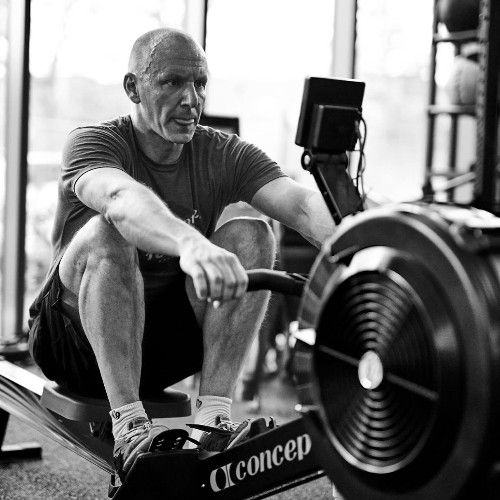
Alex Dunne helps oversee operations at Concept2’s UK subsidiary, Concept2 Ltd. He brings with him 15 years of experience representing Concept2, a competitive rowing background, and a passion for sport. Dunne went on to row at Nottingham University, then rowed lightweight at Notts County Rowing Association for eight years. We spoke to Alex about the correct form and technique on a rowing machine.
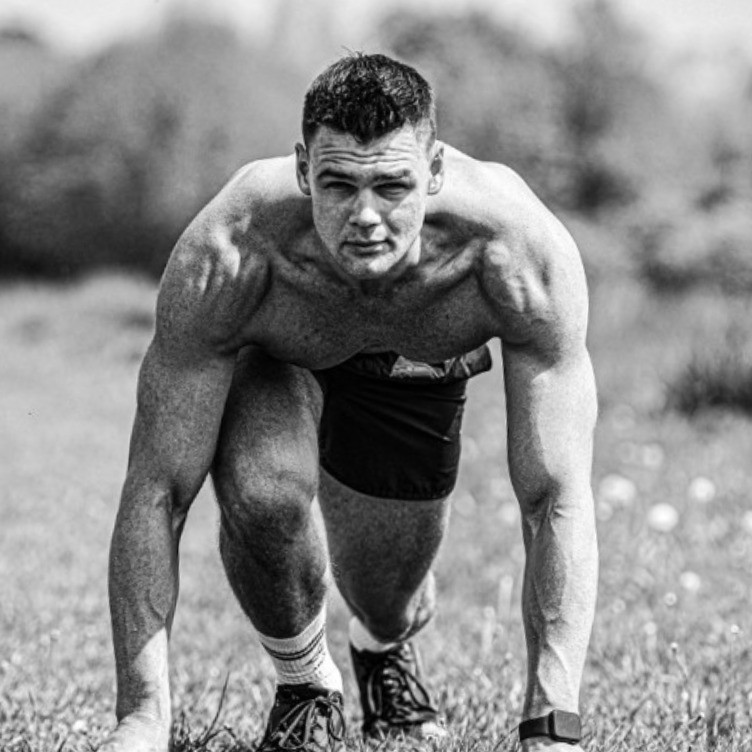
Sam Shaw is a certified personal trainer and founder of Lemon Studios, a personal training private gym located in Wooburn Green in England. He specializes in lower back pain management, injury rehabilitation and pre- and post-cancer strength programmes. Sam’s also a champion bodybuilder and keen rugby player. For this piece, he discussed the pros and cons of different rowing workouts.

Juju Sheikh is a certified personal trainer, a Pilates instructor and founder of Cloud Nine Collective, a fitness app designed for women. She specializes in body weight management, healthy nutrition and mobility training. Juju told Live Science about the weight loss benefits of rowing.
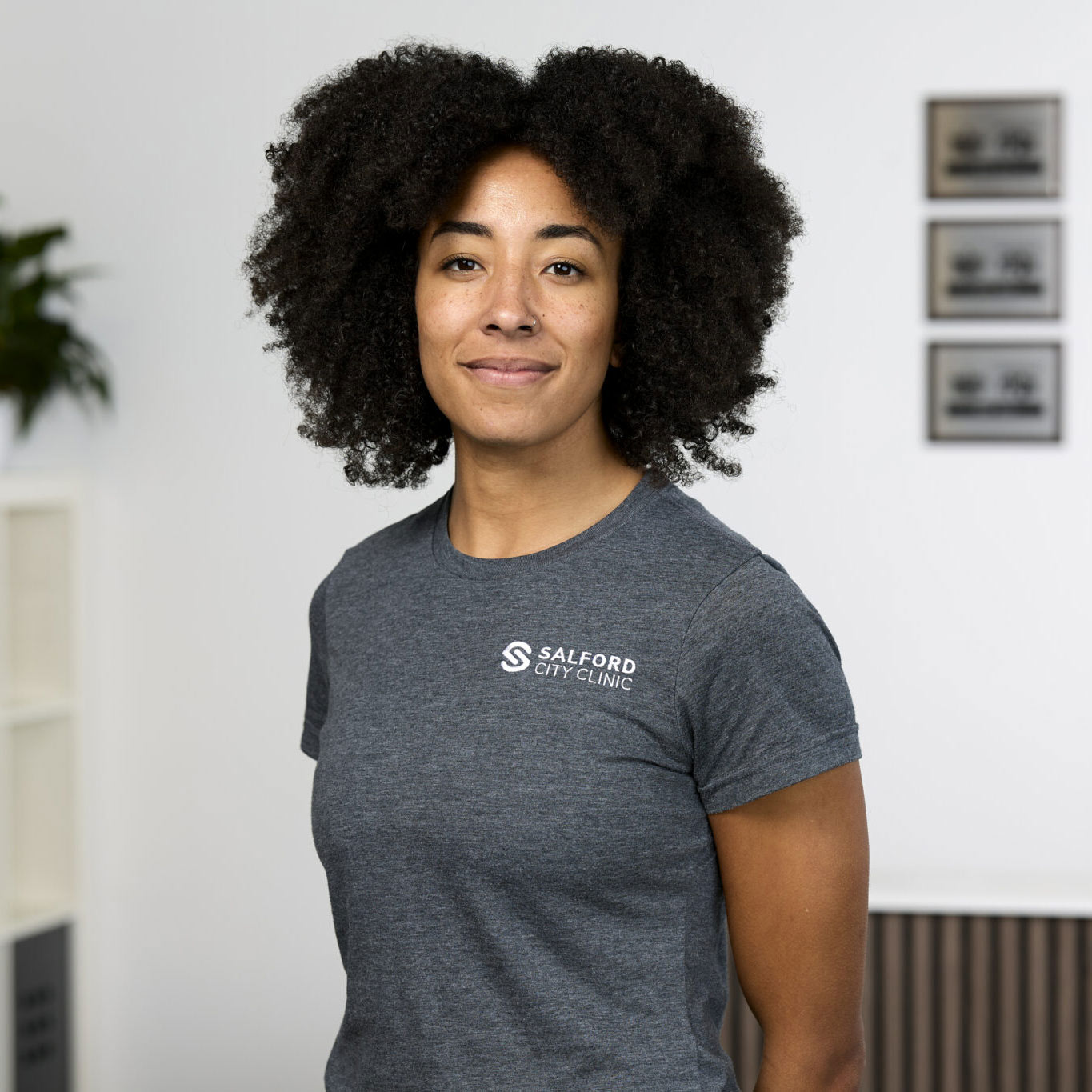
Eryn Barber is a certified personal trainer and fitness educator at The Fitness Group, a British provider of personal training courses. She specializes in strength training and endurance running. For this piece, Eryn told us how to start rowing as a beginner.

Nico Gonzalez is a certified personal trainer, motivational speaker and fitness educator for Pilates specialists Balanced Body. He is also the creator of Vital Lab Pro Education, a resource site for Pilates and fitness coaches. Nico told Live Science about the effects of rowing on back muscles and overall posture.
Best rowing machines: Frequently asked questions
What are the benefits of a rowing machine?
When it comes to the benefits of using a rowing machine, it’s hard to know where to start. As mentioned in the intro above, each stroke uses 86% of your body’s muscles including every major muscle group. A rowing workout is adaptable too, with the best rowing machines generating dynamic resistance that increases as your strokes become more powerful. So, exercisers of all abilities will be able to get out what they put in, and you can enjoy both aerobic and anaerobic exercise depending on the length and intensity of your session.
Beyond this, rowing machines are far easier on the joints than classic cardio workouts, such as running and jumping. Moreover, regular use can proffer significant bone-building benefits (according to this study in the Osteoarthritis and Cartilage journal) and many people find the rhythmic action has a calming, meditative effect.
What muscles does a rowing machine work?
One of the most comprehensive home workout tools on the market, the rowing machine works a reported 86% of muscles in your body. But which muscles does rowing work?
Your quads, calves, hamstrings, glutes, back, arms and core will all be incorporated in a rowing machine workout, Fuhrmann says. The only significant muscle that isn’t hit hard is the chest, she adds. So, if you fancy supplementing your rowing sessions with strength work, we recommend trying our collection of the best exercises for chest muscles.
Is rowing good for weight loss?
A rowing session is capable of burning calories, helping you achieve a negative daily energy balance (or calorie deficit). This means you burn more calories in a day than you consume. When used correctly, a rowing machine can help with weight loss.
“[A rowing machine] works all major muscle groups, which makes it really efficient — 20 minutes of exercise on a rower is equal to about 40 minutes on a bike,” Filip Ljubicic, a chair of the Indoor Rowing Commission, told Live Science. In fact, the average 125 pound (56 kilogram) person can burn 510 calories an hour when rowing vigorously, according to the University of Rochester Medical Center.
Does rowing strengthen your heart?
Rowing can help you strengthen your heart muscle and improve your cardiac output (the volume of blood your heart can pump out in one minute.) In fact, multiple studies have shown that elite rowers have some of the biggest and strongest hearts of all endurance athletes. Why? The answer lies in the movement itself. Rowing is a full-body workout that demands a high oxygen supply so it forces the heart to pump blood more efficiently than exercises that engage predominantly muscles in your lower body, such as running or cycling.
When is Amazon Prime Day in October?
Amazon's October Prime Day, called Prime Big Deal Days, is scheduled to take place on Tuesday, October 7 and Wednesday, October 8, 2025. We will be on a constant lookout for the best deals on rowing machines and other workout equipment, so head on to our Prime Day science deals hub to see our top picks.
Is rowing good for the back?
Rowing is a great exercise for strengthening the lower back and improving posture, Nico Gonzalez, a certified personal trainer and fitness educator for pilates specialists Balanced Body, told Live Science. "The rowing machine is one of the very few cardio equipment machines that not only works your legs but also your entire backside, and working your posterior chain [muscles located on the back side of the body, such as glutes and hamstrings] is essential for preventing the hunched-over posture," Gonzalez said.
That said, this only applies if the rowing movement is performed correctly. "Remember you should be using about 60% of your legs, 20% of your core and 20% of your arms. If you can, get a qualified trainer to guide your technique. They will let you know about form, where the power of your row should come from, and how to keep your back from over working," Gonzalez said.
However, rowing has also been shown to increase the risk of lower back pain — but this mostly applies to professional rowers with prolonged training routines and a history of back pain, according to a 2023 review published in the International Journal of Sports Physical Therapy.
Everything you need to know about rowing machines
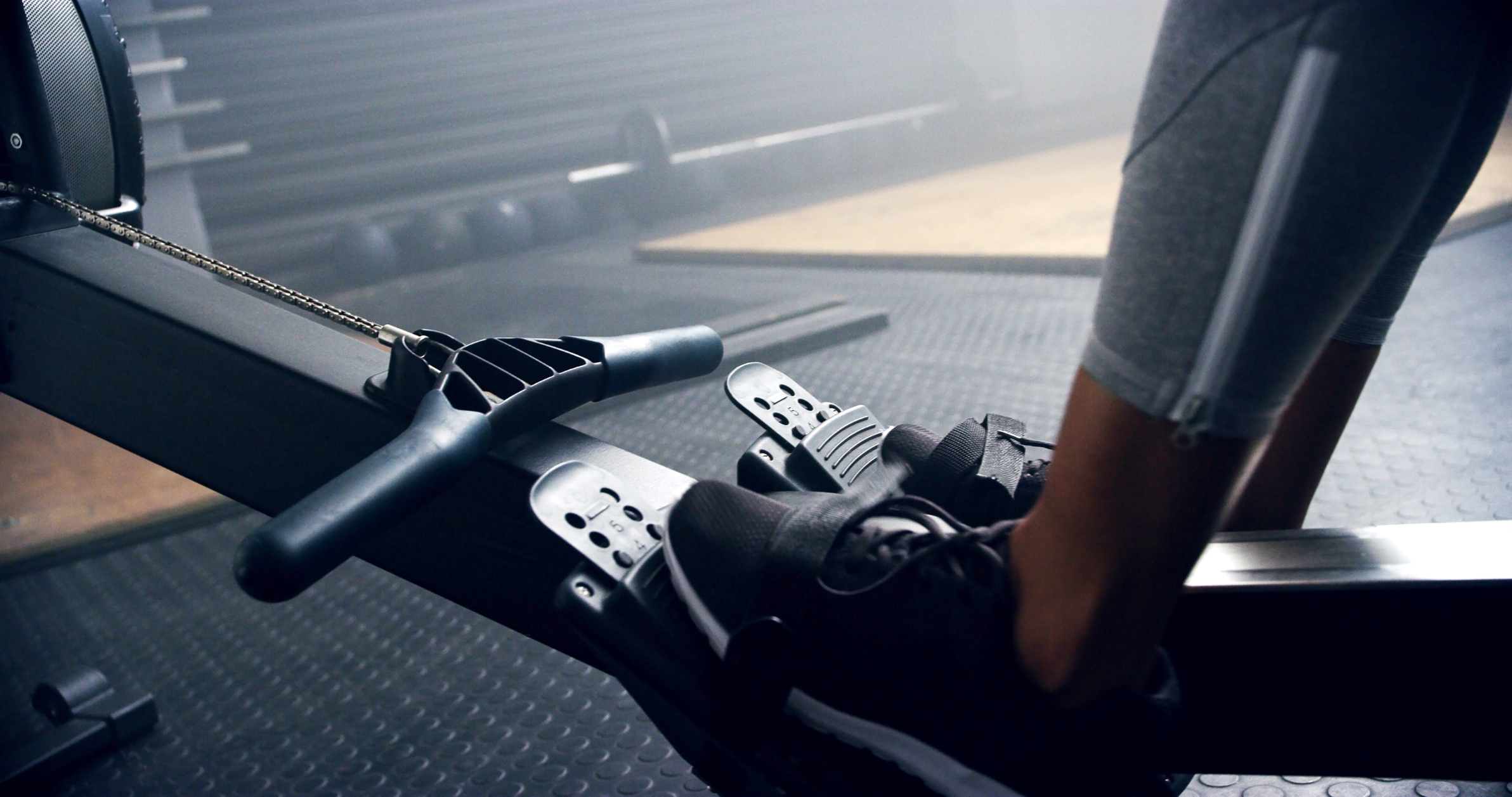
How to use a rowing machine
One of the main benefits of rowing machines is how accessible they are. After all, all you really have to do to get started is sit down and pull. However, there are some technique cues you should know if you want to perfect your form — boosting your performance and reducing your risk of injury as a result.
First, make sure you're sitting comfortably (and correctly). Rather than slumping down, make sure your sit bones are pointing down into the middle of the seat, advises Sarah Fuhrmann, certified rowing instructor and owner of UCanRow2.
The stroke can then be broken down into four phases; the catch, drive, finish and recovery. Alex Dunne, managing director of leading rowing machine brand Concept 2, explains:
Catch - Here, your legs are bent and your shins should be vertical. Use your triceps to fully extend your arms as you grasp the handle. Your abdominals should be engaged, flexing your torso forward slightly.
Drive - Initiate the drive phase with the powerful leg muscles, pushing away from the footplates while keeping your arms straight. Then, pull the handle towards your abdomen and lean back slightly.
Finish - This should leave you with your elbows bent, the handle pulled into your body just below the chest, and your abdominals stabilizing your torso at a slight angle around 2 O’clock on a clock face.
Recovery - This is how you return to your starting position before beginning the drive phase again. First, engage your triceps to straighten your arms away from your body. Flex your torso back forwards, then contract your hamstrings and calves to bend your legs and slide back down the rail.
How to start rowing as a beginner
Rowing is not hard to master, but it is not as intuitive as running or cycling. If you have never done it before, start by focusing on technique.
"Rowing is about efficiency and consistency. The biggest mistake we see is people trying to 'go hard' before they have learned the basics. Most of us did not grow up rowing, so just like riding a bike, it is worth spending a bit of time to learn to do it correctly," Fuhrmann said.
Start by breaking your stroke down into four parts — catch, drive, finish and recovery. Make sure you master each of them before you start building up intensity (you can read more about the correct technique in the How to use rowing machine section above.) "Look for beginner-friendly videos that will show you how to put it all together one step at a time," Fuhrmann said.
Once you get the gist of the movement, start with short bouts of easy rowing. As a beginner, your priority is to build the habit of exercising on a regular basis. So, try to row little and often, Eryn Barber, a certified personal trainer and fitness educator at The Fitness Group, a British provider of personal training courses, told Live Science.
"If you try to commit to 30-60 minute sessions at a time, this can be overwhelming. Instead, commit yourself to 5-10 minutes of rowing each day. It might seem pointless, but it will get you in the habit of exercising on a regular basis. The chances are that once you have committed to 10 minutes, you will decide to continue for a longer period of time," Barber explained.
Make sure to track the intensity of your workouts, as this will help you establish whether you are progressing with your rowing routine. "Focus on a sustainable stroke rate (20–24 strokes per minute is a good beginner target) and track how your time on the machine, as well as the number of meters you cover in that time, grows," Fuhrmann said.
Once your confidence and fitness levels begin to improve, start gradually increasing the duration of your workouts and experimenting with different kinds of training routines. "For example, you can mix in intervals or rowing-strength training combos to keep it fun and help you stay consistent," Fuhrmann said.
If you have a rowing machine with connected apps and on-demand workouts, it is a good idea to take advantage of the fitness content at hand. However, be wary of more “gamified” elements such as rowing challenges and speed contests. "If you give too much attention to rowing as fast as possible, you may display poor form to get the fastest time. This is why it is important to work on technique as a beginner and ensure that good habits are instilled from the offset," Barber concluded.
Can you lose belly fat on a rowing machine?
The short answer is that it depends. “Rowing is a full-body exercise that engages lots of different muscle groups - the legs, core, back and arms. This combination of muscle engagement makes for a high calorie burn which can definitely help to blast belly fat. But, just as a reminder - it's not necessarily possible to lose fat in one specific area through targeted exercise alone. Fat loss occurs throughout the body as a whole and is influenced by various factors like genetics and overall body composition,” Juju Sheikh, a certified personal trainer and founder of Cloud Nine Collective, told Live Science.
Fundamentally, rowing cannot spot-reduce belly fat, but it can assist in improving your overall body composition. In fact, rowing may be more effective at burning body fat than cycling, according to a 2015 study published in the Scandinavian Journal of Medicine & Science in Sports. Thirteen young males were instructed to perform 20-min steady-state exercise bouts, both on a bicycle ergometer and a rowing machine. Researchers found that, despite similar oxygen consumption, rowing appeared to burn on average 45% more fat than cycling.
However, it needs to be pointed out that there are two types of belly fat: subcutaneous and visceral. Subcutaneous fat sits underneath the skin and acts mostly as a protective layer to your muscles and bones. Visceral fat, on the other hand, wraps around your internal organs deep inside your abdomen. Exercise appears to predominantly burn fat stored underneath the skin, while only a small percentage of released energy coming from visceral fat. How your body burns fat may also heavily depend on the duration and intensity of physical activity, according to a 2020 review published in the journal Frontiers in Physiology.
Although it is unclear what may be the best strategy for losing stubborn belly fat, studies suggest that combining high-intensity and moderate intensity exercise appears to be the most effective workout strategy for improving body composition, the review authors noted.
The good news is, a rowing machine can be used effectively for both steady-state cardio and high-intensity training, making it a good tool in the fight against obesity, Sam Shaw, a certified personal trainer and founder of Lemon Studios, told Live Science. “The rowing machine is a great all-rounder and is extremely useful for helping with cardio fitness and building muscle. You can use it for interval training to increase your calorie burn, as well as for building your capacity to burn more calories,” he said.
But no matter how hard you train, losing belly fat may be close to impossible without a proper diet. “You can implement a session on the rowing machine into your workout, but you won't lose belly fat from using the rowing machine alone without the right nutrition. In order to drop excess body fat, your food intake needs to be in a calorie deficit so that you are expending more energy than you are consuming,” Shaw said.
Is 15 minutes a day enough on a rowing machine?
Again, it depends. Rowing machines allow you to engage in a variety of different workouts, from gentle steady-state cardio on the lowest setting to sweaty high-intensity interval training. Whether 15 minutes a day is enough to achieve your goals will vastly depend on your overall fitness level, type of exercise and your rowing technique.
Rowing is one of the most effective forms of cardio exercise; unlike running or cycling, it works your entire body, including your core, upper back and even shoulder muscles. When done with proper form, working out on a rowing machine can boost your cardiorespiratory fitness and lead to some serious calorie burn. In fact, elite rowers have one of the highest energy requirements among athletes, according to a 2022 review published in the journal Frontiers in Physiology.
However, for steady-state aerobic workouts to produce tangible results, they cannot be too short. According to the World Health Organization, adults aged 18 to 64 should do at least 150 minutes of moderate-intensity exercise a week in order to reap the health benefits. 15 minutes of aerobic exercise a day on the rower comes down to only 105 minutes a week, so you would need to supplement your sessions with other cardio, or go for longer.
Dedicating just 15 minutes a day to rowing may also not be sufficient for significant weight loss or noticeable changes in body composition, depending on your starting weight and body fat percentage, Sheikh told Live Science. However, that does not mean that short workouts serve no purpose. “Any physical activity is better than none! If 15 minutes is all you can manage to start off with, that's fine. Gradually work your way up to at least 20-30 minutes of continuous rowing, and consider increasing the duration as your fitness level improves. Longer sessions allow you to burn more calories and engage in sustained aerobic activity,” she said.
On the other hand, rowing for 15 minutes a day may be enough if you opt for high-intensity interval training (HIIT), characterized by short bouts of intense or explosive exercise interspersed with brief rest periods. According to a 2022 review published in the Journal of Physiology, there is strong evidence that low-volume HIIT, which typically involves less than 15 minutes of high-intensity exercise per session, can lead to the same, or at times greater, improvements in cardiorespiratory fitness and blood sugar metabolism when compared with traditional forms of aerobic training. Studies have also shown that low-volume HIIT is safe and well-tolerated by most individuals, and does not tend to produce adverse effects, the review authors noted.
But how does one adopt an interval training program? “An effective way of exerting energy and building fitness levels may be alternating between 30 seconds sprint (fast row) and 30 seconds rest (slower pace row) for the 15 minutes duration. You could also opt for one minute fast/one minute slow for 15 minutes. Alternatively you could adopt a race mode where you row fast for 15 minutes and see how many meters you can achieve as a challenge,” Shaw said. In addition, many rowing machines come with built-in HIIT routines, so if you’re in doubt, try those instead.
How to choose the best rowing machine for you
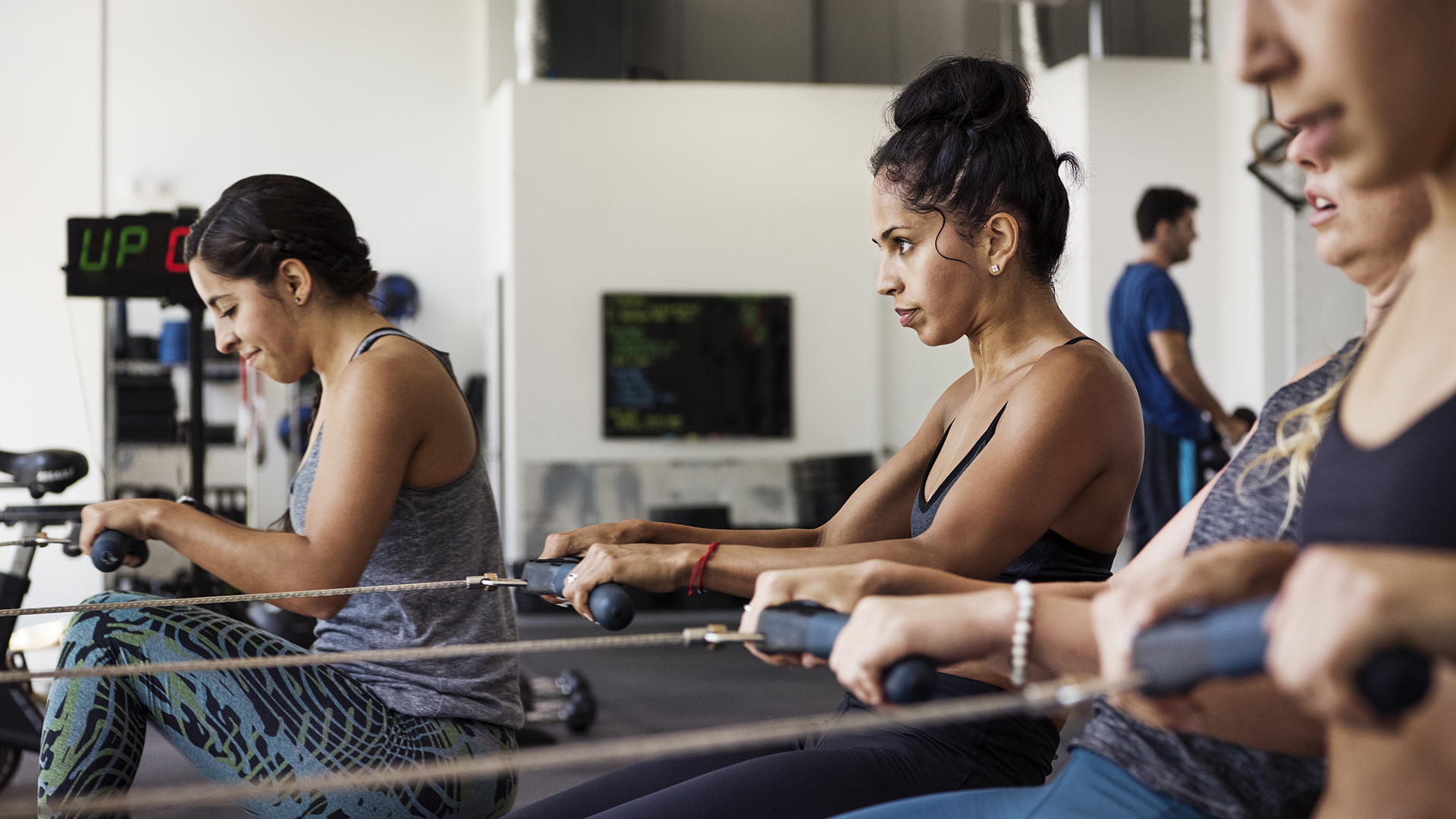
With such a wide range of rowing machines on the market, picking the right model might feel like more of a workout than what you intend to do on it. Making a decision based on the price may be a tempting short-cut, but this strategy may not give you the best possible experience. In truth, even the fanciest models could prove to be a waste of money if they do not cater to your skills and preferences. So to help you make the right choice, here’s what to look for when buying a rowing machine.
First, carefully examine the dimensions of your chosen model. Rowing machines tend to be smaller than exercise bikes or treadmills, but they can still take up a lot of floor space. You also need to account for the rowing motion itself, so make sure your rower allows you enough room to spread your arms and tilt your back without bumping onto the walls or sacrificing your technique. If you have a small apartment, consider investing in a foldable rowing machine. However, check whether your chosen model is light enough to be moved around with ease ― the last thing you want to do is to get injured while lugging your rowing machine to the cupboard.
The next thing you want to look into is the ergonomics, or in simpler terms, whether the rowing machine fits your body. Your chosen model may be packed to the brim with hi-tech features, but if your seat is too small or downright uncomfortable, or the console is placed too high up, you may end up frustrated and dissatisfied with the whole experience. Be sure to check the width and positioning of the footplates, and whether the handlebar provides a steady, comfortable grip. Lastly, account for any mobility issues. For example, if you struggle with tight hips or knee pain, consider investing in a rowing machine with a higher seat.
Now that you’re sitting comfortably, make sure to choose the right type of resistance. There are three main types of rowing machines: magnetic, air and water. Models that use water for resistance offer the closest possible experience to open-water rowing. The strokes are smooth and balanced, and the machine itself does not make much of a noise. In fact, many people find the characteristic whoosh-whoosh sound soothing and motivating. On the other hand, water rowing machines offer a limited range of resistance, and can be maintenance-heavy.
Models that use air resistance are equipped with a flywheel with an integrated fan ― a feature that allows for smooth rowing movement and reduces the need for machine maintenance, but also generates a considerable amount of noise at high speeds. Magnetic rowing machines, on the other hand, are often whisper quiet, but the strokes may not feel as smooth and intuitive as the ones achieved with water-based models.
Lastly, the console. If you want to stick to the basic rowing stats, such as rowing speed or stroke rate, simple black-and-white monitors can work well for you. However, if you are a fan of high-octane entertainment and immersive experiences, consider investing in a model with a more advanced screen. Many rowing machines come with brand-specific apps that offer games, virtual races and other fun-filled features. And if such a colorful touchscreen can keep you motivated and eager to achieve your goals, then it may be worth splashing out on.
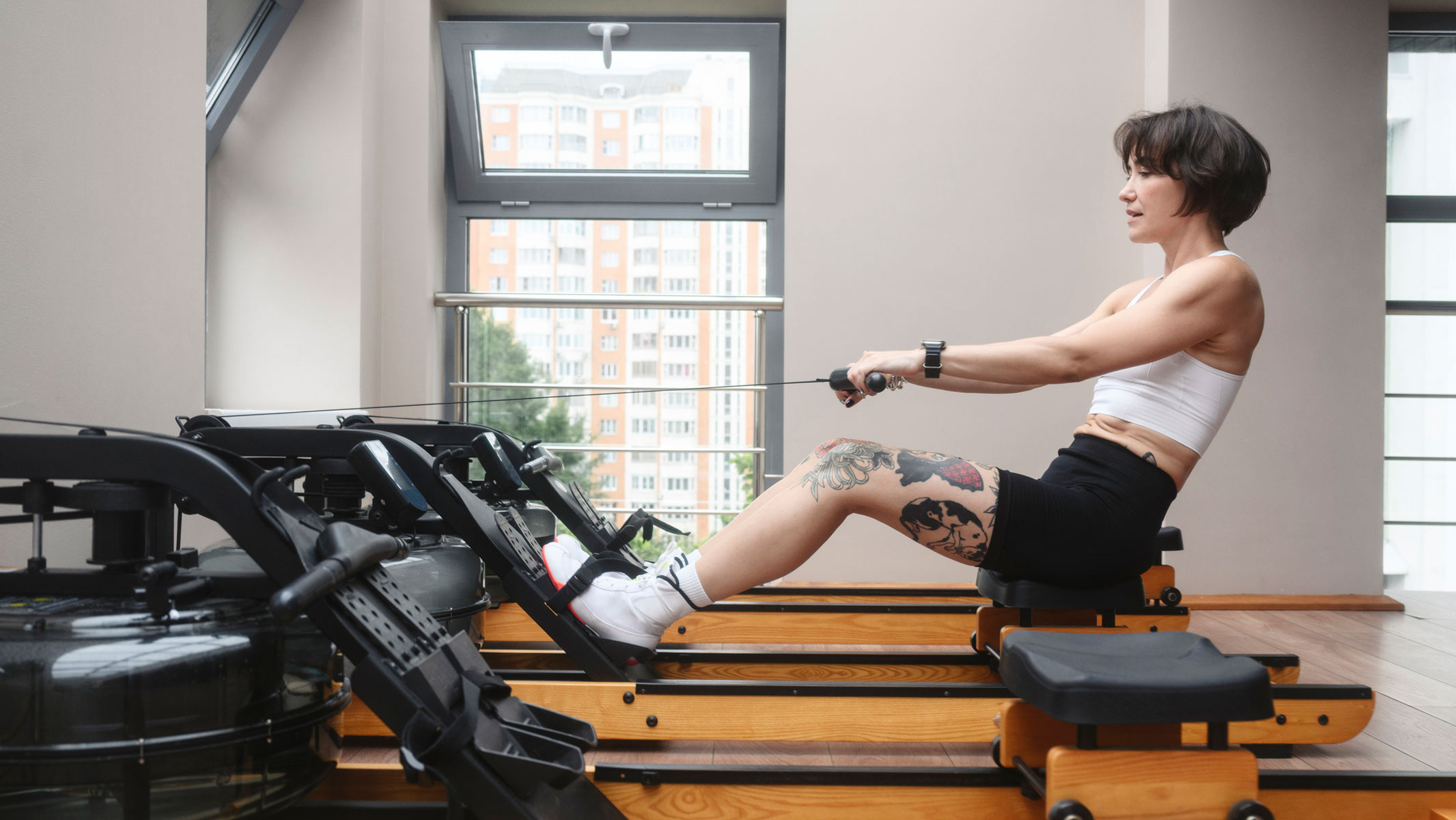
How much should you spend on a rowing machine?
When choosing a rowing machine, resist the urge to go for the cheapest option. You’ll save some money, but you may be lining up problems for yourself further down the line. "Spending less on a low-end machine that does not fit your body well or can't handle your workout may backfire by leading you to think you do not like rowing, when in fact you just did not have the right machine," Fuhrmann said.
So, how much should you spend on a rowing machine to get the best value? "As much as you are able and willing to invest, optimally at least $500," Fuhrmann said. However, that does not mean you can't get a good quality rower on a limited budget. If you don’t want to fork out hundreds of dollars for a brand new machine, consider investing in a secondhand rower instead.
Either way, make sure that your rowing machine is made by a reputable brand. Why? Rowing machines at the more expensive end of the spectrum tend to be more durable and better-designed.
"They have enough room to take a full stroke, both fully extending at the finish and fully compressing at the catch," Fuhrmann said. They are also better at tracking your progress. "[More expensive rowing machines tend to have] a monitor that displays elapsed time, distance, split, and stroke rate," she noted.
Lastly, good-quality rowing machines can be sold quickly and for virtually their original price, Fuhrmann said.
What is the best rowing machine for beginners?
As a general rule, the best rowing machine is the one that meets your budget and needs, not just what looks flashy on social media or what you see advertised most often. This also applies to beginners. If you are new to rowing, focus predominantly on these few non-negotiables: durability, good fit, clear and robust data tracking, good customer support and high resale value, Fuhrmann said.
"Make sure the machine allows you to take a full stroke," she said. Your legs should fully extend at the back of the stroke (the "finish"), and your knees should compress comfortably at the front (the "catch"). Your rower should also come with a monitor that, as a minimum, can show your split time (time taken to complete 500 meters), strokes per minute, elapsed time and rowing distance. "This is the foundation of rowing workouts and how you will track progress," Fuhrmann said.
Opt for a machine from a reputable company that stands behind its product. The best machines, like the Concept2, hold their value and resell quickly, which can be handy if you decide that rowing is not for you. Plus, reputable companies tend to have more responsive customer support, so they can help you should you run into any issues with your rower, Fuhrmann said.
How we tested these rowing machines
How we test the best rowing machines at Live Science
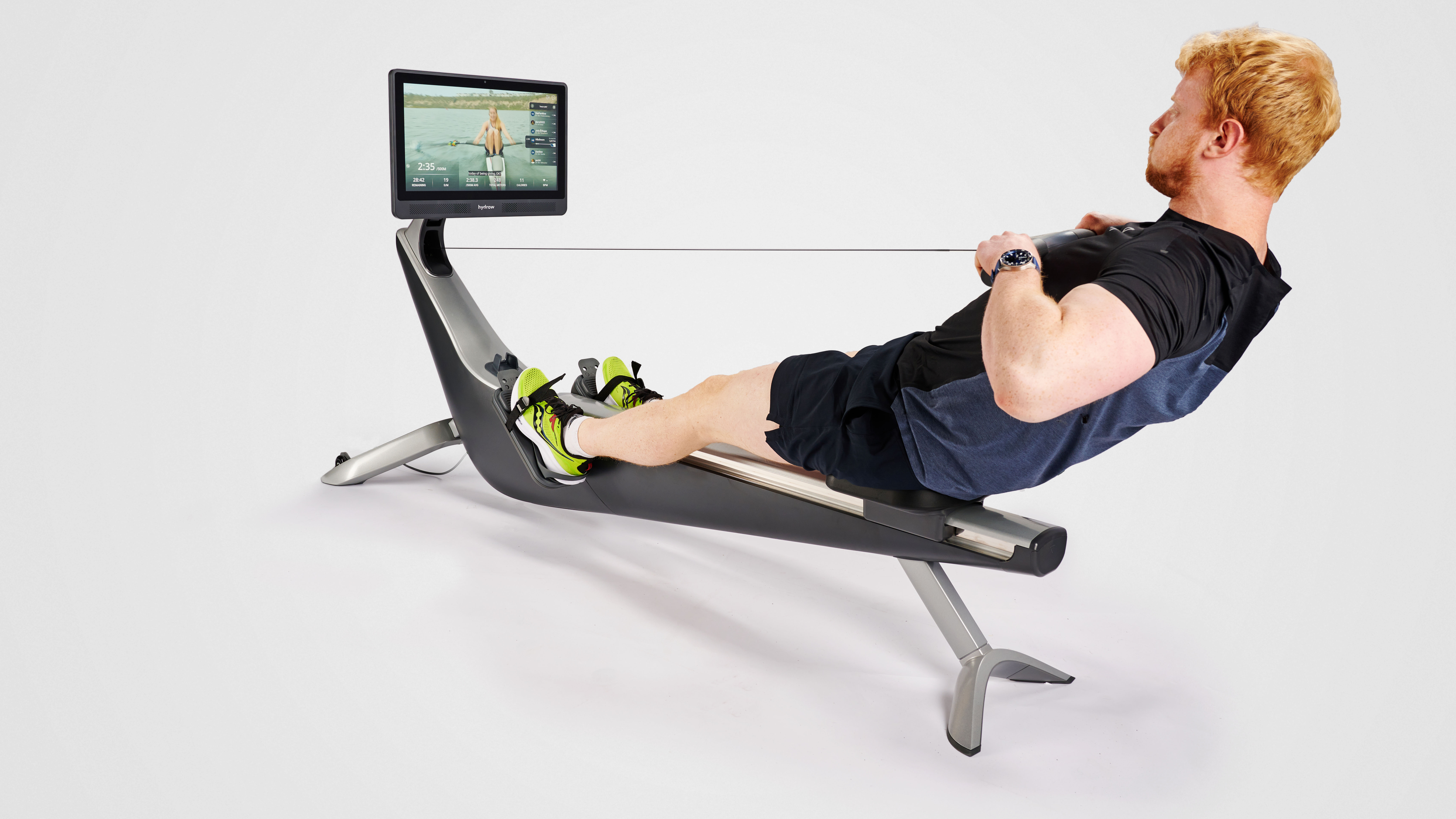



Our reviewers. We are highly experienced exercise professionals and fitness enthusiasts who know first-hand the many benefits of training on a good quality rowing machine. We have tested nearly a dozen different models over the years, so we know which machine works like magic and which does not live up to expectations. You can trust our verdicts.
We also know that no two people are the same, and what worked for us may not work for you. To avoid bias and give you an objective assessment, we test all rowing machines to the exact same standard. After spending several weeks testing each machine, we rank it across the following categories:
Set-up and usability. We want to know what type of users this rowing machine was made for. We check the dimensions, maximum user weight and assess whether it is easy to assemble, move around the room and store away.
Design and display. We take an in-depth look at the rower's design, including its sturdiness, general appearance and ease of use. For example, we check whether the rowing machine is easily accessible for people with limited mobility. We assess its controls, display (if there is one), flywheel, frame, seat and footplates, and we make note of any design tweaks that enhanced or impeded our user experience.
Features. We take note of every single feature of the tested rowing machine. For example, we check how many intensity levels and exercise modes it has to offer. Does it come with any smart features? Which rowing stats does it measure? Can this machine be connected to an external heart rate monitor? Does its connected app allow you to take part in fun fitness activities, and if so, are they hidden behind a paywall?
Performance. We put the rowing machine through its paces to get a full picture of its abilities. At the very least, we row a range of distances from short sprints to longer endurance pieces to lung-busting HIIT-style sessions, and (where applicable) try the pre-set programs and follow-along sessions. We also check any claims made by brands, including the rowers’ functionality at the maximum resistance settings.
Verdict. Finally, we give our answer to the key question: is it worth it? All feedback is collated to award the rowing machine with a final star rating, with a maximum score of five. We also advise who this machine works best for, and who should look elsewhere.
Latest updates
November 11, 2025: We added the Merach NovaRow R50 as the best alternative to the Concept2 Row Erg.
April 22, 2025: We updated the FAQs and How to choose sections.
March 19, 2025: We updated the FAQs section.
February 11, 2025: We updated the How we test section.
Get the world’s most fascinating discoveries delivered straight to your inbox.

Harry Bullmore is a fitness writer covering everything from reviews to features for LiveScience, T3, TechRadar, Fit&Well and more. So, whether you’re looking for a new fitness tracker or wondering how to shave seconds off your 5K PB, chances are he’s written something to help you improve your training.
When not writing, he’s most likely to be found experimenting with a wide variety of training methods in his home gym or trying to exhaust his ever-energetic puppy.
Prior to joining Future, Harry wrote health and fitness product reviews for publications including Men’s Health, Women’s Health and Runner’s World. Before this, he spent three years as a news reporter with work in more than 70 national and regional newspapers.
- Lou MudgeHealth Writer
- Chris McMullenContributing writer


